Driver Reviews
Review: Ping G, G LS Tec and G SF Tec drivers
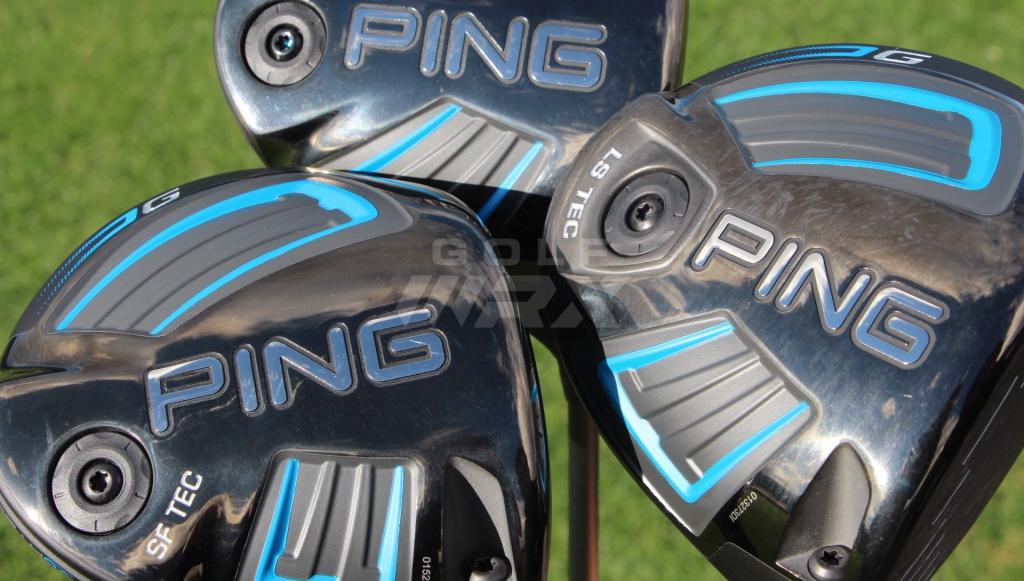
Pros: The most forgiving driver Ping has ever made. Sleeker, more pear-shaped head improves aerodynamics. Thinner crown adds forgiveness, creates higher launch.
Cons: The Dragonfly-inspired crown and Turbulators may distract some golfers at address. No CG adjustability.
Who they’re for: With three distinct models (Standard, LS Tec, SF Tec), the G drivers can suit everyone from Tour players to beginners. Most golfers will do best with the Standard model, while high-spin golfers will gravitate to the LS Tec. Chronic slicers will enjoy the SF Tec, which offers more draw bias than the G30 SF Tec.
The Review
The G-Series drivers are the follow up to Ping’s incredibly successful G30 line, the best-selling drivers for the majority of their 18-month product cycle. There were several keys to the success of the G30 drivers, the most important of which was their low, rearward center of gravity (CG) that made them golf’s most forgiving drivers, according to our 2015 Gear Trials Panel. Along with their big balls speeds, our Panel also noted that the G30 drivers were able to produce a high launch angle and maybe most importantly, much less spin than previous Ping drivers.
With the G drivers, Ping continues to show off its ability to move weight lower and more rearward in its driver heads, achieving a CG position that’s 0.05 inches lower and 0.07 inches deeper. That gives the G drivers a 6 percent higher moment of inertia (MOI), a measure of a club’s forgiveness, on shots contacted vertically across the face and a 1 percent higher MOI on shots contacted horizontally across the club face.
While every last bit of improvement counts in the highly regulated space of driver design, golfers who currently own a G30 driver won’t notice a significant difference in forgiveness if they upgrade to the new model. What they will notice, however, is a change in the shape of the new drivers, which improves their aerodynamics.
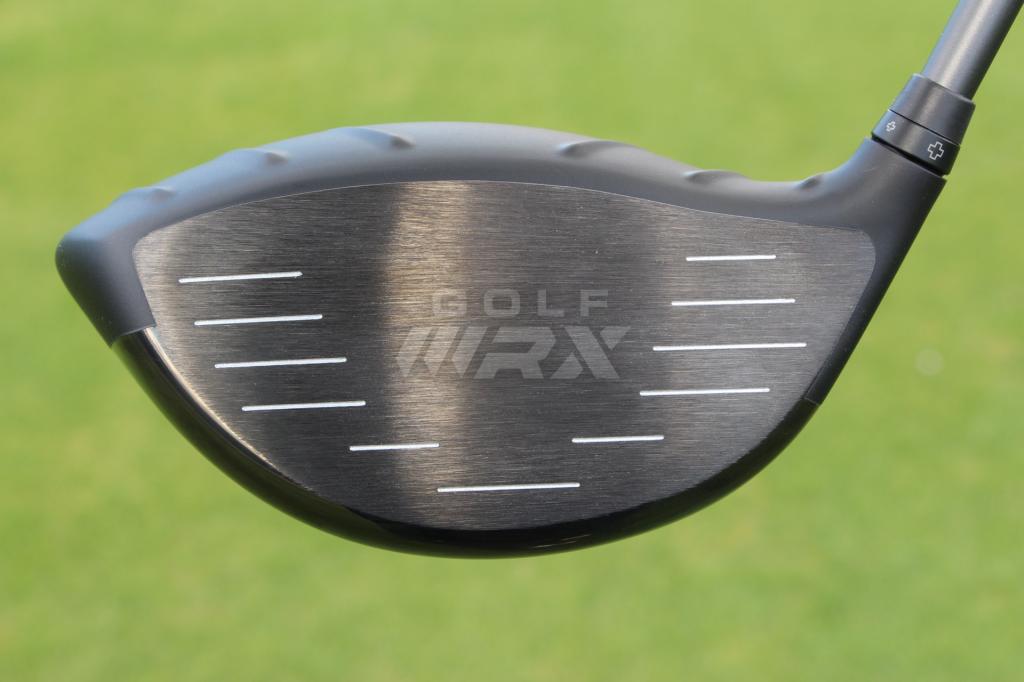
All three G drivers use Ping’s high-friction face finish, which reduces spin. In the G30 line, only the G30 LS Tec used a high-friction face finish.
The G drivers employ more traditional, pear-shaped club heads made possible by an eye-catching change to the geometry of their crowns. Ping calls it “Dragonfly Technology,” and it occupies the space behind the company’s “Turbulators,” which were introduced with the G30 driver. The crown pattern was inspired by a dragonfly’s wings, and allowed thickness to be reduced from 0.52 millimeters in the G30 to 0.43 millimeters in the G – about the thickness of three $1 bills stacked on top of each other. It also freed up 8 grams of discretionary weight that was used in head reshaping efforts.
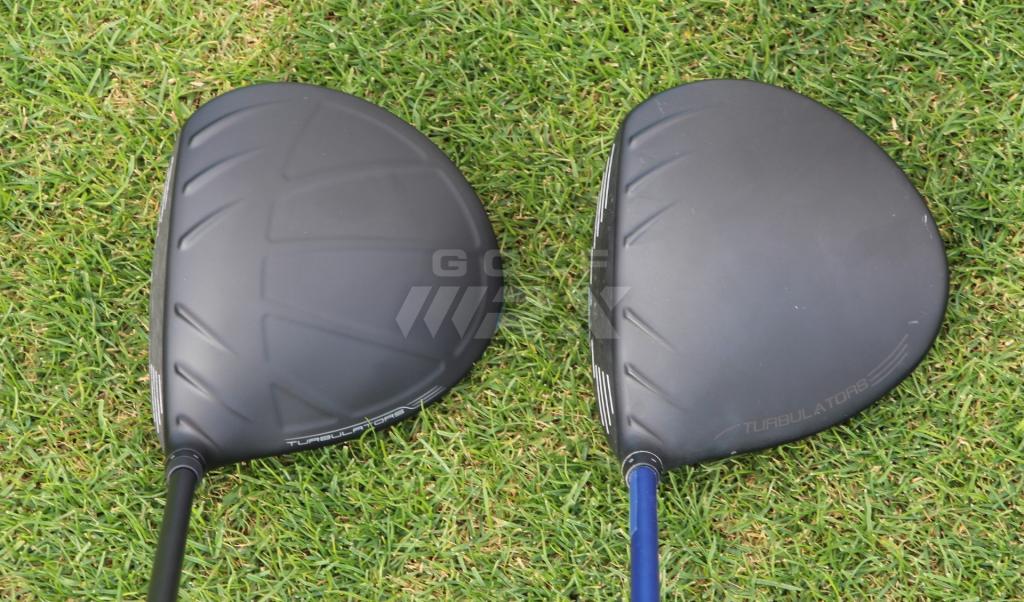
At Address: Ping’s G LS Tec (left) and Ping’s G30 LS Tec. All three G drivers have the same head shape and aerodynamic features.
While other companies have used carbon composite constructions to make the crowns of their drivers lighter, Ping continues to push the limits of low-density, Ti 8-11 titanium bodies that also debuted on the G30 driver. The all-titanium construction, which includes Ping’s T9S titanium club face, is one of the reasons the G drivers will likely sell for about $399 ($435 MSRP), whereas most of its competitors are selling its premium drivers for $449 and up.
Another contributor to the G’s relative affordability is Ping’s decision to exclude moveable weights from its design. While that may irk tinkerers, the three different G drivers create three different trajectories, and one of them is likely to suit majority of golfers interested.
Ping G LS Tec
- Ping’s lowest-spinning driver because of its slightly lower, more forward CG.
- Face angle is slightly open (1 degree), and lie angle is 1-degree flatter than the G.
- Heavier, D4 swing weight also creates more fade bias. Head weight is 207.5 grams.
- Available in lofts of 9 and 10.5 degrees.
Ping G
- Square face angle for neutral ball flight.
- D3 swing weight, head weight is 206 grams.
- Available in lofts of 9 and 10.5 degrees
Ping G SF Tec
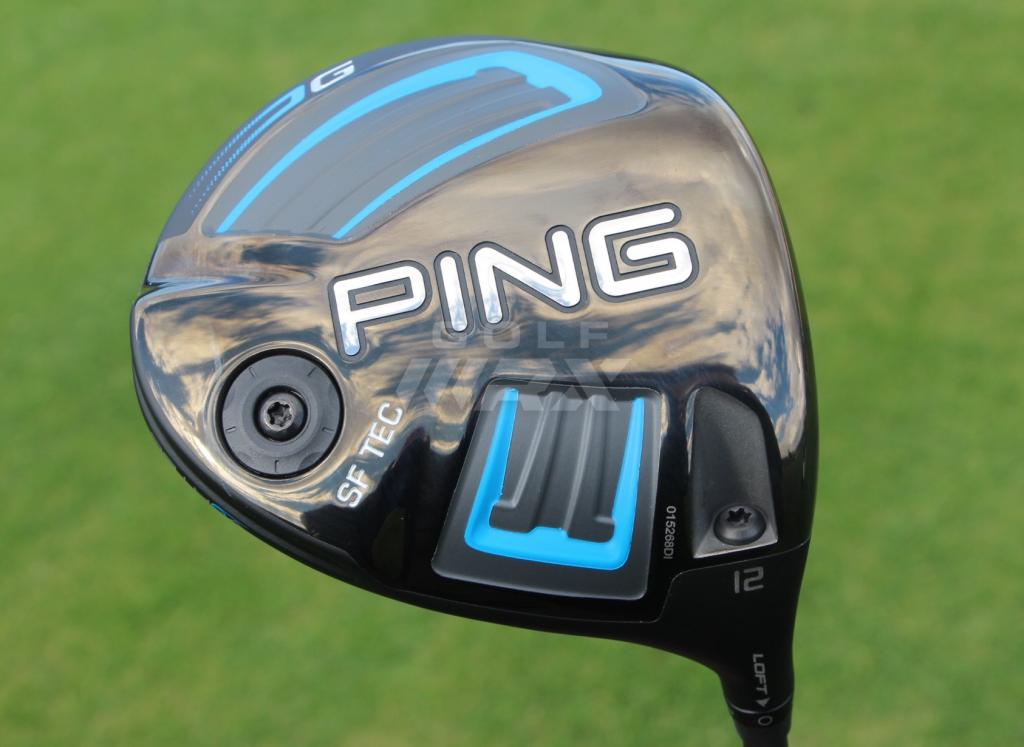
- 1-degree closed face angle and lighter D1 swing weight. Head weight is 203 grams
- More heel-biased CG creates roughly 10-12 yards more draw bias (compared to G).
- Available in lofts of 10 and 12 degrees.
Aerodynamic Improvements
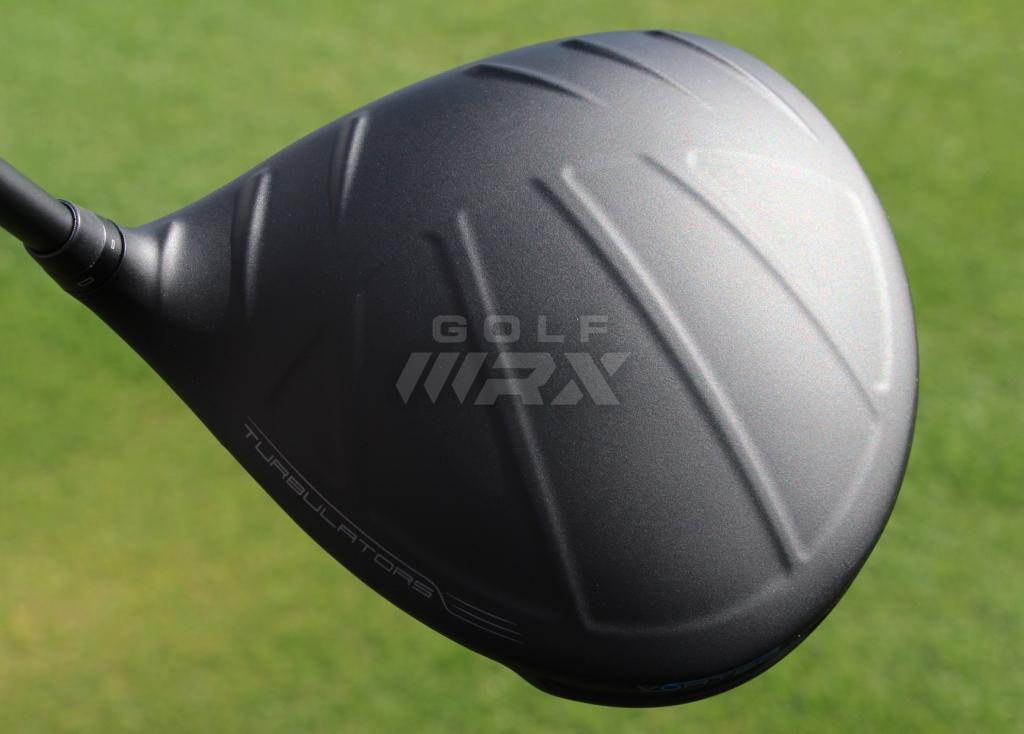
The crowns of the G drivers are more “domed” compared to the G30 models, which like the Turbulators allows airflow to better “stick” to the surface as the driver head approaches impact. The Turbulators themselves were also tweaked slightly in the new drivers, as they’re flared more outward. Even the space in front of the turbulators was smoothed out, which also helps create a smoother airflow.
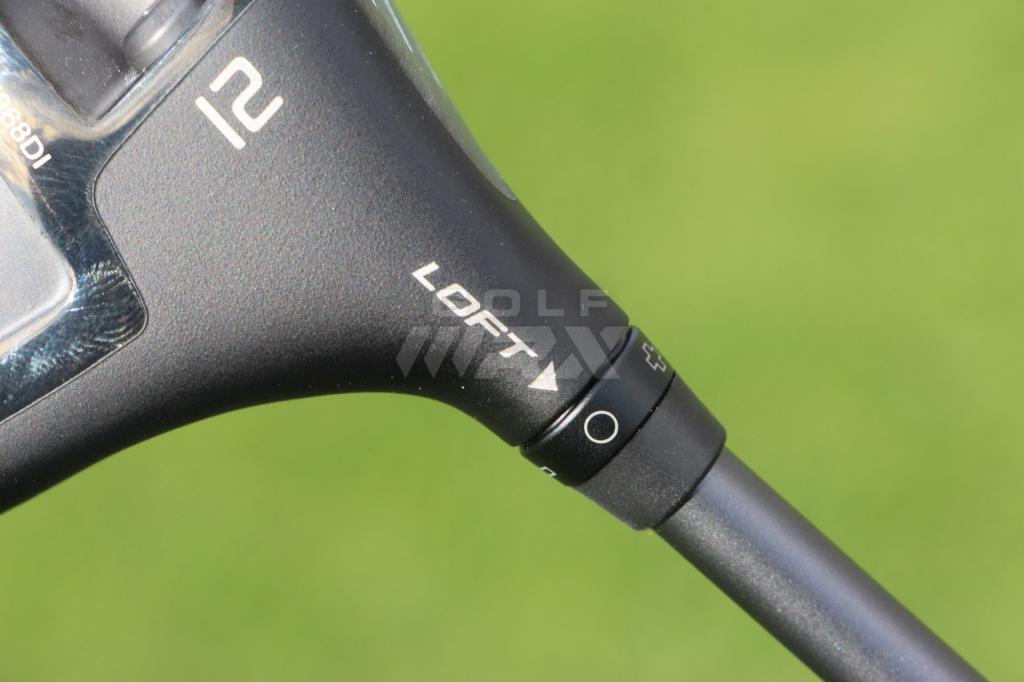
The G drivers use a new 7075 aluminum hosel sleeve, which is compatible with G30 models. It’s adjustable +/- 0.6 degrees or +/- 1 degree from stock loft.
The new aerodynamic feature that golfers will notice first, however, is called Vortex, which like the trailers being employed on the back of semi-trailers reduces drag forces on the very back of the driver.
According to Ping, the combined aerodynamic changes reduce drag by 11 percent for the entire downswing, and creates 37 percent less drag at the moment of impact. Ping says the real-world benefits of all this will be between 0.75 mph and 1 mph more swing speed for the average golfer, but the faster golfers swing the more they’ll benefit. In our test, we saw an swing speed increase of 1.43 mph, on average, for our two testers who swung between 108 and 118 mph.
The Test
To test the performance of the G drivers (Standard, LS Tec and SF Tec), we took them to Carl’s Golfland in Bloomfield Hills, Mich., where its Trackman Master club fitting team tested the three new models against their predecessors at its Launch Pad Fitting Center.
The two testers hit the drivers in the same loft (9 degrees in both the G/G30 and G LS Tec/G30 LS Tec, 10 degrees in the G SF Tec/G30 SF Tec) and with the same shaft (Ping’s Tour 65X at 45.25 inches with no tipping), and the outdoor test employed premium balls and Trackman’s normalization feature.
The Data
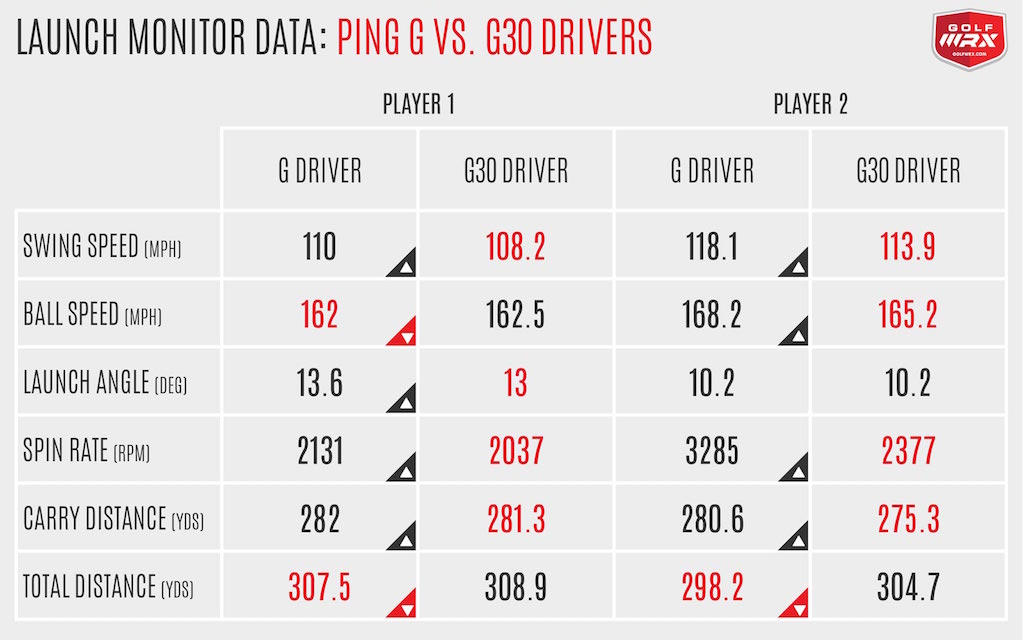
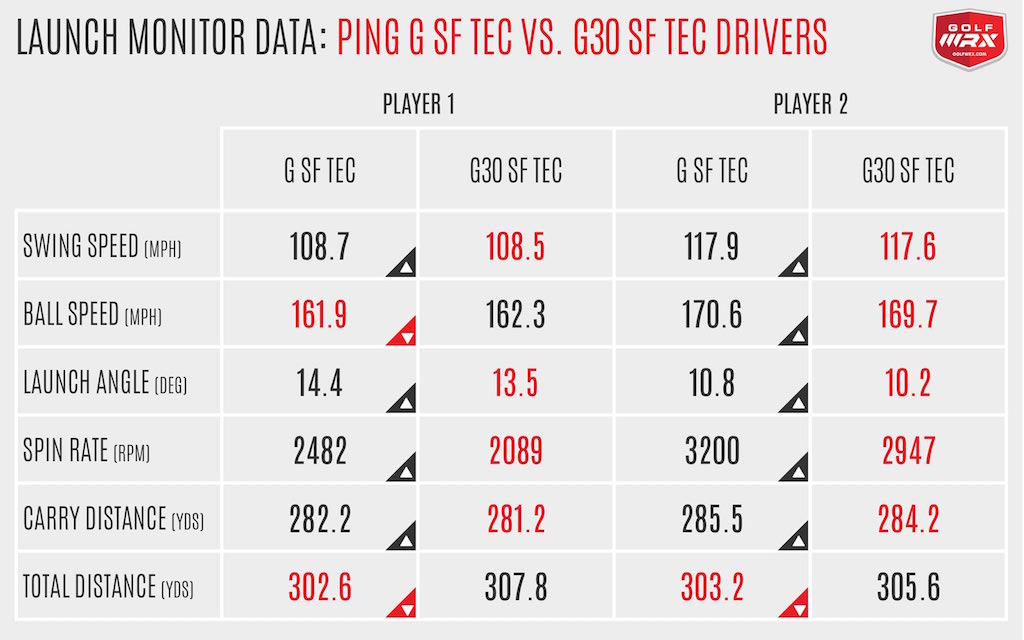
Since the drivers were not optimized for each player, the carry and total distances are not as important as the differences in swing speed, ball speed, launch angle and spin rate.
That being said, it’s clear from our testing data that the G and G30 drivers are quite similar, although the G drivers do appear to have an edge in both club head speed (+1.43 mph) and ball speed (+0.71 mph) on average across the three models. The G drivers also proved to be slightly higher-launching (+0.31 degrees) and higher-spinning (+342 rpm). That fits with Ping’s recommendation that golfers will get the best performance from a G driver if they use less loft than they needed with G30 models.
According to Ping, its tour players are using between 0.25 and 0.5 degrees less loft with the G drivers, on average, than they did with the G30 drivers. Using less loft in a driver is beneficial because, all other things are equal, less loft at impact creates more ball speed and therefore more distance.
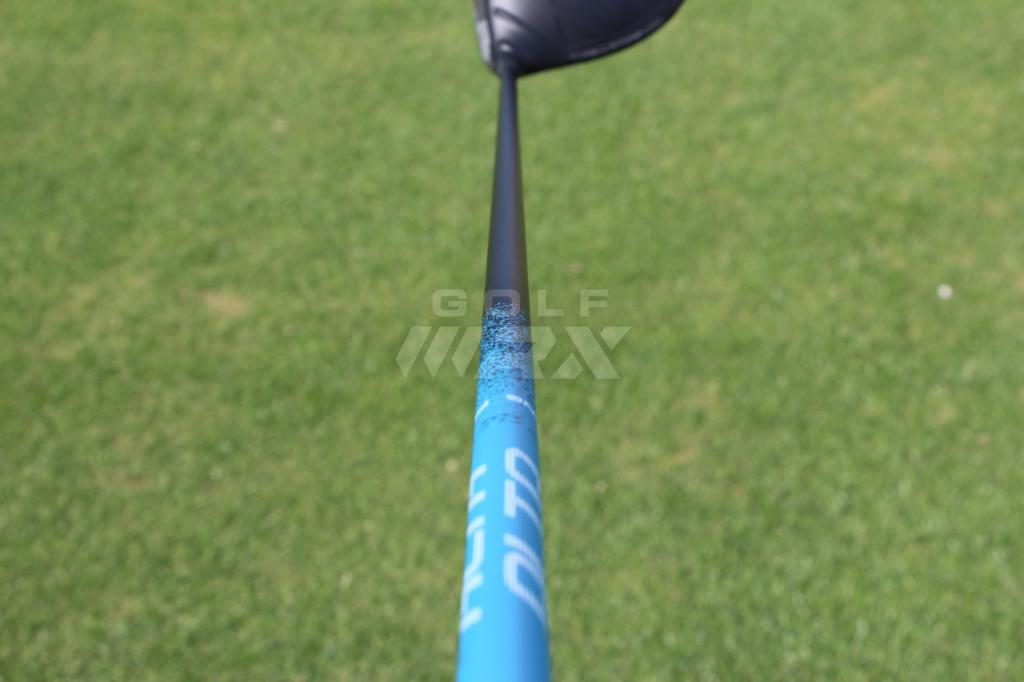
The G’s stock shaft is Ping’s new Alta 55, which uses an extremely high-balance-point design. Ping’s Tour shafts are available for a $30 upcharge, and have an overall stiffer, lower-torque profile.
Given that the launch monitor numbers are quite similar between the three different G driver models, the most important part of the buying decision for most golfers will likely be choosing the model that creates the best dispersion. Keep in mind that each of the G driver heads are the same size (460 cubic centimeters) and have the same head shape, with the only differences being swing weight, face angle and internal weighting.
Player 1 Dispersion
Player 2 Dispersion
Almost robotically, Player 1 validated that Ping’s G SFT driver will offer golfers the most draw bias, while the G will offer a neutral trajectory bias and the G LS Tec will offer the most fade bias. Player 2’s results weren’t quite as clean, but reflected the same general pattern.
The Takeaway
It’s likely that the greatest weakness of the G drivers will be that golfers will compare them to Ping’s already excellent G30 drivers.
We did not see the same performance leap with the G drivers that we saw when the G30 drivers were released, but the aerodynamic improvements, as well as the more traditional shaping of the drivers and their lower-pitched sound at impact, makes the them one of the most intriguing new launches of 2016 — even for golfers who currently own a G30 driver. For golfers using an older Ping driver, upgrading is a no brainer for more distance and consistency.
Compared to the other new drivers on the market, the G drivers will continue to benefit from their high-MOI design. Few competitors will be able to match the G’s balance of big ball speeds, a high launch angle and impressively low spin.
Related
- See more photos of the G drivers, as well as what GolfWRX Members are saying about them in our forum.
- Ping’s new G Fairway Woods, Hybrids and CrossOver
- Ping’s new G irons: What you need to know
[wrx_retail_links productid=”58″]
[wrx_retail_links productid=”57″]
[wrx_retail_links productid=”56″]
- LIKE380
- LEGIT34
- WOW35
- LOL5
- IDHT5
- FLOP7
- OB2
- SHANK80
Driver Reviews
GolfWRX Spotlight: Tour Edge Exotics C721 driver

Tour Edge’s Exotics line of high-end golf clubs has been known for excellent fairway wood and hybrid performance over the years. The Chicago-based company has been consistently putting out high-quality products, and golfers are really taking notice. The new line of C721 drivers, fairway woods, and hybrids take yet another big leap forward from last year’s EXS line.
The new C721 driver takes a lot of technology from the 2020 EXS line and further refines and expands on it. I know it is a little cliche when companies say every model is their best ever, but Tour Edge is 100 percent right this time.
When unboxing the C721 the first thing I noticed was the much-improved looks and shape over the previous Tour Edge drivers. The biggest change to my eye is the added bulge, giving a more rounded and softened topline.
The overall shape of the C721 is slightly stretched from front to back, giving it just a hint of a triangular look. The Ridgeback is a titanium spine flanked by two carbon fiber wings that add stability and forgiveness to the head, but they can also work together and an additional aiming device to ensure you are lined up down the center of the fairway.
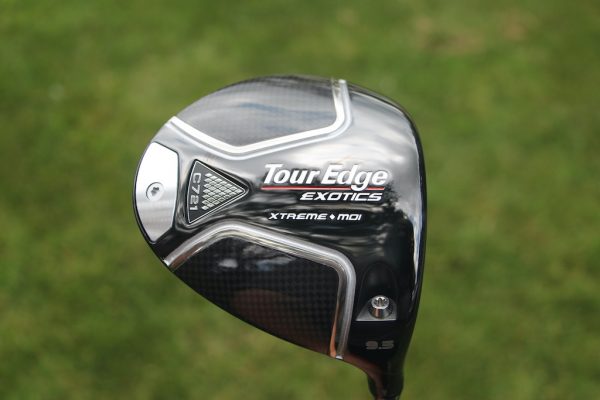
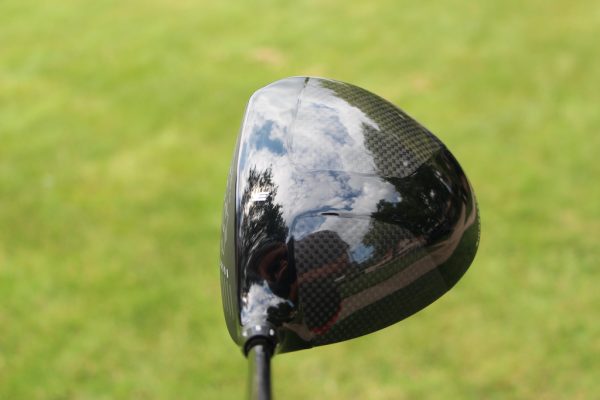
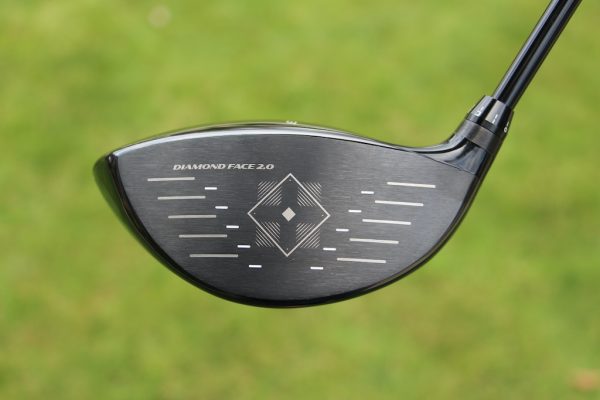
Getting the C721 out on the course is where you really start to appreciate all the technology that went into this driver. Well-struck shots are very long, very boring, and will hang with anything out on the market today. Center contact is rewarded with a long and very low spin shot that is just fun to hit.
The sound and feel are very solid, you can really feel the ball compress on the face as it leaves at high speed. The sound is more of a muted crack and much quieter than I anticipated. If you practice on an enclosed range your ears will thank you for your choice in drivers. Shots hit away from the center of the face retain a lot of ball speed and stay online really well.
My miss is low on the heel and those misses stayed in the air fairly well and went a good ways. Shots hit down on the heel or higher on the toe side still stay online really well due to the Ridgeback spine and rear weight. The C721 is just slightly higher than mid-launch for me, but the low spinning head never allowed my shots to balloon or rise even into the wind. I do wish the face was just a touch deeper as I had to play with my tee height in order to find the optimal setup. The better players will enjoy the neutral weighting and there seems to be very minimal draw built into the driver.
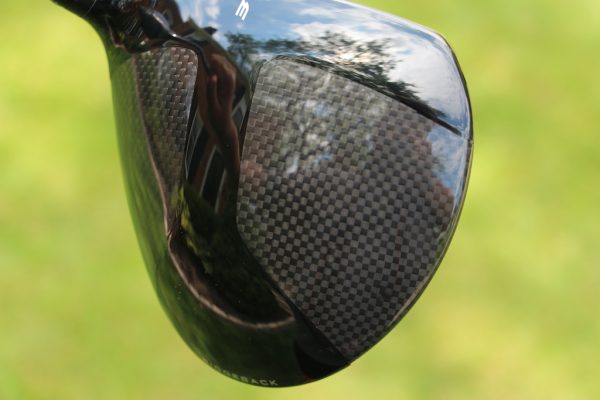
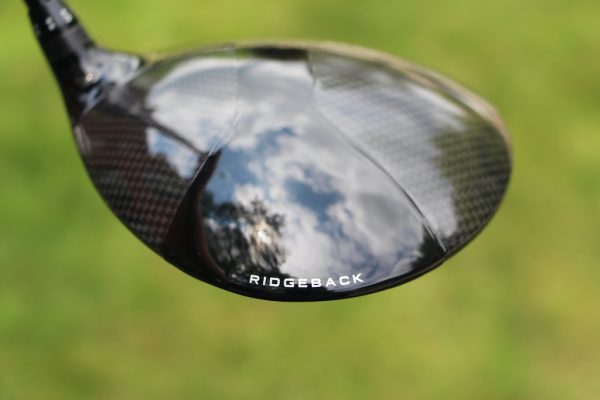
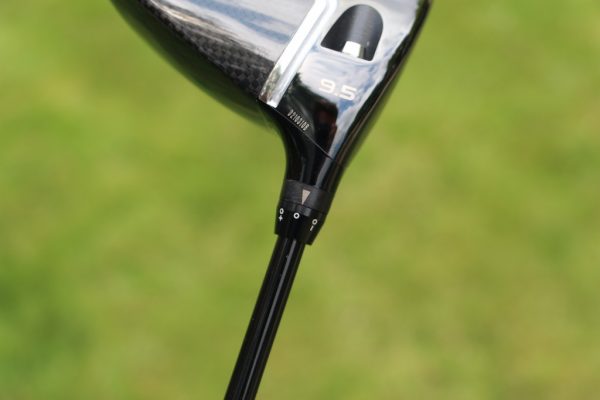
Overall, the Tour Edge Exotics C721 driver is a great club that will probably be overlooked by too many golfers. If you are looking for added distance, a lot of forgiveness and want to keep some money in your pocket, then you should seriously take a look at Tour Edge.
- LIKE103
- LEGIT12
- WOW6
- LOL2
- IDHT1
- FLOP1
- OB2
- SHANK5
Driver Reviews
Review: Ping’s G400 and G400 LST Drivers
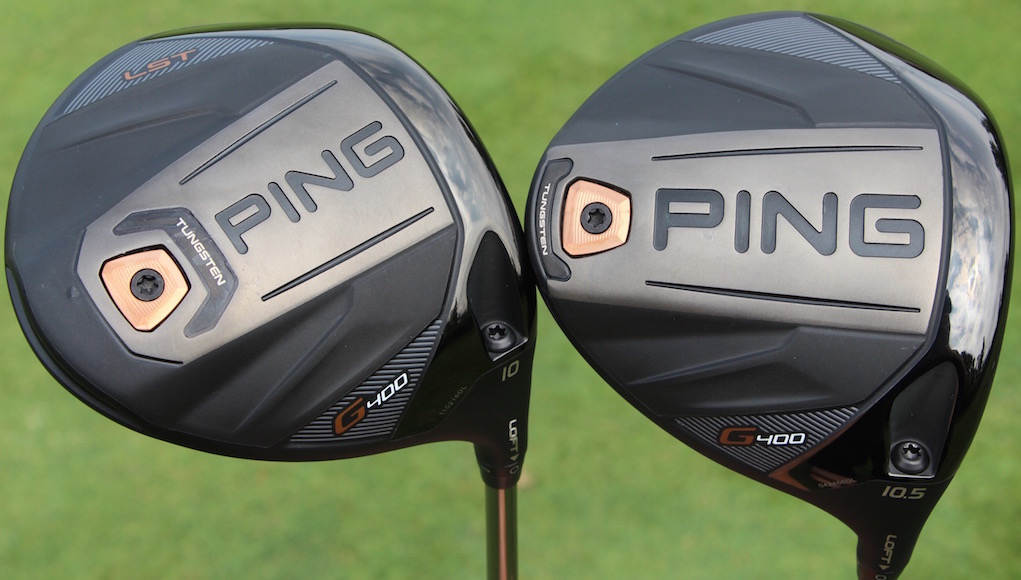
I still remember the first time I hit Ping’s G30 driver. It was July 2014, and I was at Ping’s HQ in Phoenix. Super low-spin drivers were all the rage at the time. With their forward center of gravity, they were helping golfers optimize their launch conditions beyond their wildest dreams: crazy high launch, ridiculously low spin. Many in the business, including myself, had one of these drivers and spent many launch monitor sessions trying to figure out how to get more distance from these high knuckleballs. The bad news was that forward-CG drivers, by nature, were really unforgiving. Bad shots were really short and crooked.
Before I knew the G30 was a big deal, Marty Jertson, Ping’s Director of Product Development, explained to me his vision for the perfect driver inside a conference room at Ping Headquarters. In his eyes, the perfect driver didn’t have the low, forward center of gravity (CG) that was being touted at the time. Its CG was located as low and as rearward in the driver head as possible, which he said would offer the best of both worlds: optimized launch conditions on good shots, as well as the best possible forgiveness on bad shots.
Building the perfect driver was a long way off (and still is), but Jertson was excited where Ping had landed with the G30. When it was released, the driver was a powerful testament to his vision. Its rear-CG design created great distance on good and bad shots, and it was also a very straight driver. The G30 sold incredibly well and, as a result, the industry mostly shifted away from forward-CG drivers.
It’s been nearly three years since the release of the G30, and Ping has just made another counterintuitive driver release. The company shrunk the size of its new G400 drivers in a climate where full-size drivers have become the norm. Granted, it’s only 15 cubic centimeters smaller, but it’s noticeable at address. Compared to the Ping G drivers they replace (which replaced the G30), the G400’s look like they cut carbs.
Despite their slimmer frames, however, the G400 drivers are actually more forgiving than the G drivers (which were even more forgiving than the G30). That’s why Ping representatives say smaller is actually better in the G400’s case. The drivers have the lowest, most rearward CG of any Ping drivers ever, and their smaller size is said to improve their aerodynamics so golfers can swing them fractionally faster. The other big change is a new face material made of T9S+ titanium, which is thinner and more flexible to help golfers generate more ball speed.
For this review, I wanted to put the G400 and G400 LST to the test against the G and the G LST drivers that they replace, so I took them to the Launch Pad at Carl’s Golfland in Bloomfield Hills, Mich. I hit five shots with each driver on Trackman IV, and to ensure as much of an apples-to-apples comparison as possible, I tested each driver head with the same shaft. Each driver head was adjusted to the same loft, or as close as possible.
Note: The G, G LST, and G400 drivers I tested were 10.5-degree heads adjusted to 9.5 degrees. The G400 LST had a loft of 10 degrees, and it was adjusted to 9.4 degrees.
The Test
In my personal driver tests, I don’t usually see a huge uptick in distance or accuracy when comparing the latest drivers to the most recent models from the same manufacturer. Improvements generally come in the form of improved head shaping, a better feel, or enhanced adjustability. That’s why I was surprised to see such a big change in my launch conditions and dispersion with the G400 drivers.
G400 Test Results: With the G400, I launched my drives an average of 1.6-degrees higher than I did with the G while dropping spin an average of 416 rpm. That led to a significant improvement in distance. With my swing speed and ball speed staying about the same, I added an average of 7.2 yards more carry distance and 8.7 yards more total distance.
G400 LST Test Results: First, a note about the G400 LST. It has a CG that’s slightly lower and more forward than the standard G400 driver to help golfers reduce spin. Like the G30 LST and G LST, it’s still very much a rear-CG driver, but its design helps high-speed golfers who can consistently find the center of the club face maximize distance without highjacking forgiveness. When I test Ping drivers, the LST is generally the model that creates the best performance, and the G400 LST was no exception. I saw an average of a 1.2-degree higher launch angle with all other things staying about the same when I compared it to the G LST. The result was an average of 6.6 yards more carry distance and 3.1 yards more total distance. It was the longest and straightest driver I hit in the test.
Note: Ping also sells a G400 SFT (Straight Flight Technology) driver, which has added draw bias. To learn more about it, click through to tech story on the G400, G400 LST and G400 SFT drivers.
Dispersion
One way to explain the improved launch conditions is that I hit the G400 drivers more consistently. As you can see in the Trackman dispersion chart, I hit the G400 and G400 LST drivers straighter on average than the G and G LST. Is that its slightly enhanced forgiveness shining through? Maybe, maybe not.
To me, the changes Ping made to the look and feel of the driver were just as important as the performance difference I saw on Trackman. I’ve always preferred smaller driver heads, or at least 460-cubic-centimeter drivers that appear smaller than their size. For that reason, I felt more confident with the G400 drivers in my hands. I didn’t mind that I didn’t see any added swing speed or ball speed from the smaller driver head. I was sold on the looks alone.
- At Address: Ping’s G400 (left) and G drivers.
- At Address: Ping’s G400 (left) and G drivers.
I also preferred the sound of the G400 drivers to the G drivers. There was definitely much more of a “thwack” than a “ping” at impact, which made the G400’s feel more powerful. Looks and feel are subjective, of course, but to me the improvement was night and day. I don’t think it’s a stretch to say that my fondness for the looks and feel of the G400 was at least a contributing factor to my improved performance in the test, if not the most important factor. When I like the way a club look at address, I tend to hit it better, and I know I’m not alone.
I do want readers to keep in mind that this was a one-person test and I hit a limited amount of balls. Yes, it’s a great indication that the G400 driver can be measurably better than a G driver, but it’s not a guarantee.
I also want to address the weaknesses of the G400 drivers. While they’re few, they could push golfers into another driver model in a fitting. Unlike Callaway’s GBB Epic, TaylorMade’s M1 or Titleist’s 917 drivers, the G400’s don’t have CG adjustability. That means there’s no way to fine tune ball flight outside of a shaft or loft adjustment. A bigger deal for some golfers might be the G400 crowns. Despite their smaller size, there’s still a lot to look at address, as was the case with the G drivers.
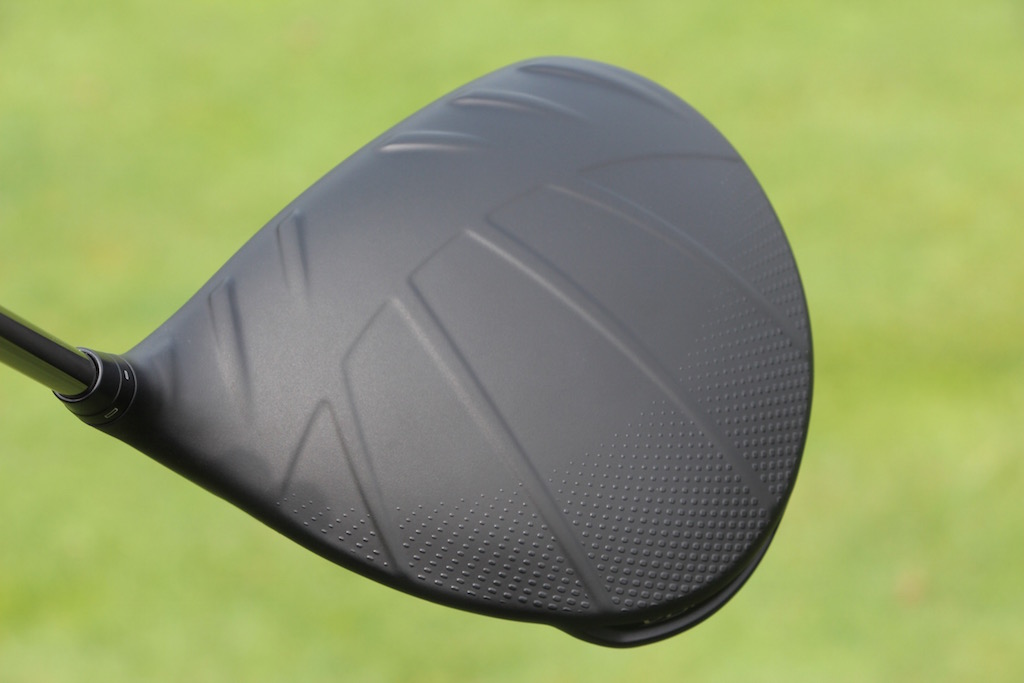
Aerodynamic features on the front of the crowns, “Turbulators,” have been thickened for the G400 release. There’s also Ping’s “DragonFly Technology,” a geometry on the back of the driver crowns that helps push CG lower and more rearward in the driver heads. I personally think the G400 crowns give the drivers an old-school, muscle car-like look, but there’s no question they won’t fly with all golfers.
Whatever your thoughts about what’s on top of the G400 drivers, there’s no question that what’s under the hood can offer something the G and G30 drivers did not. Maybe you’ll like the smaller head. Maybe you’ll prefer the quieter sound. Maybe the improved forgiveness will show up on a launch monitor or on the course. Or maybe you’ll just flat out rip a G400 farther and straighter down the middle like I did.
If that last bit happens, try not to second-guess it.
- LIKE676
- LEGIT83
- WOW48
- LOL18
- IDHT12
- FLOP22
- OB15
- SHANK59
Driver Reviews
Members Choice: The Best Driver of 2017
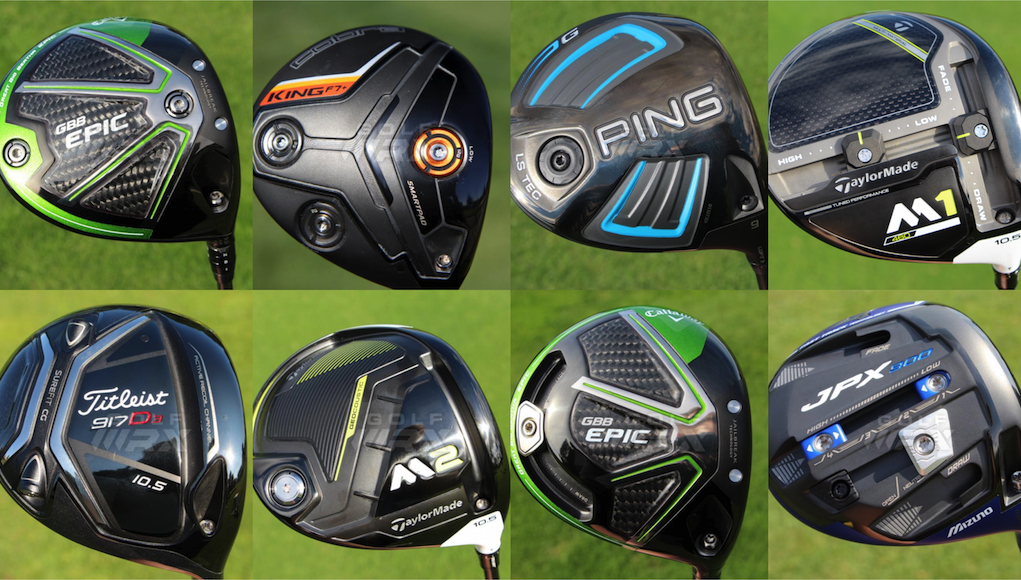
What determines the best driver on the market; is it the opinion of professional club fitters, professional golfers or testing results from a group of amateurs?
At GolfWRX, we believe all three sources can lead golfers to an answer. Being a website founded by passionate golfers with a mission to serve passionate golfers, though, we place a special emphasis on the opinions of our GolfWRX Members — the most knowledgeable group of golfers on the planet. No other group of golfers in the world tests golf clubs as frequently or as extensively as GolfWRX Members. So who better to poll to get an initial indication of the best performing drivers so far in 2017?
So we asked them, “What’s the best driver of 2017?” They voted for the three drivers they felt most worthy of the title and provided feedback about their selections in our special forum thread. You can see the results below (as of the first three weeks of voting), as well as quotes we pulled from GolfWRX Members about the drivers from our forum.
Remember that our polls will remain open for voting throughout the year, and we’re going to keep an eye on the percentages as more and more golfers have an opportunity to test these drivers. We’re also working on another Best Driver list, which will evaluate clubs in another important way. Stay tuned!
Keep in mind that there’s no single driver on the market that is the absolute best option for every golfer: that’s why nearly every manufacturer makes at least two different models. As this list indicates, however, some drivers are working better than others this year. Happy Testing!
Note: Forum posts were minimally edited for grammar, style, spelling and clarity.
Cobra King LTD Black (3.00 percent of votes)
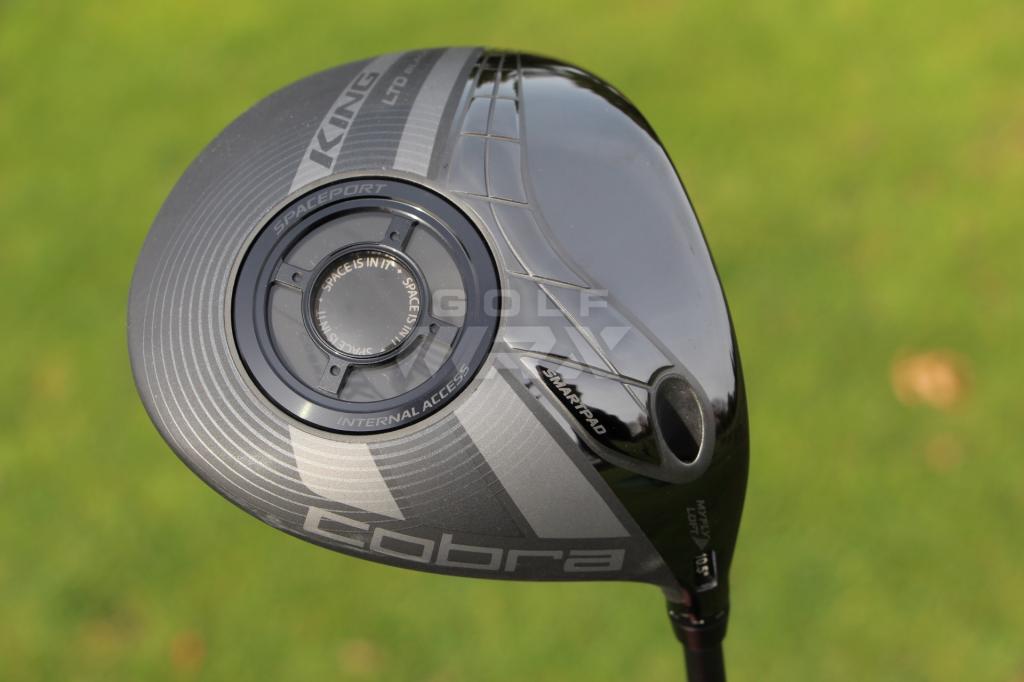
- The General: All-black LTD is really clean looking. I’m about to cover up the orange on my LTD with lead tape. Orange is played out
- mh7vw: Love my LTD, but wish the black finish (or even this gray) didn’t have that subtle checkering you see in some like. Prefer plain black.
- dbleag: I am a fan of the black/orange combo. The performance and sound of the LTD is very appealing to me. I also like that the standard length is 45 inches. For me, that helps it be super-accurate. With the low-spin design, I hit it longest of the current offerings and can’t remember the last time I missed a fairway. Straight, solid, low spin and nice.
Further Reading
Mizuno JPX-900 (3.20 percent)
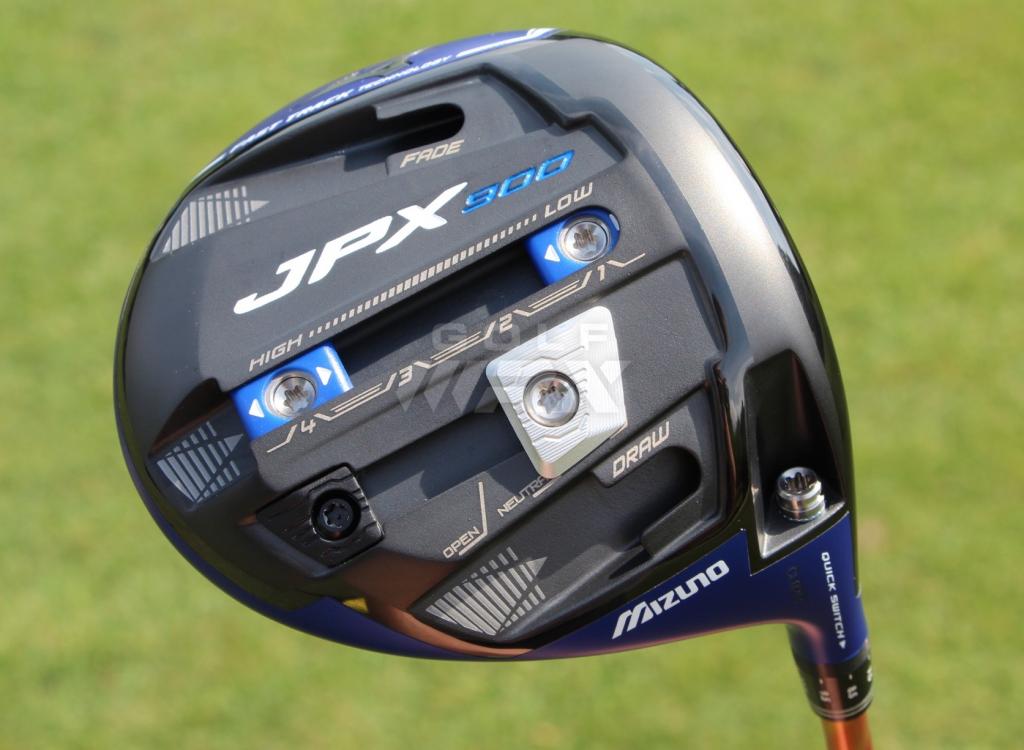
- johnnythunders: JPX goes straight. Best real-deal shaft and is long and very adjustable.
- KT35: That blue head looks awesome sitting on the ground. I hit balls off the toe and heel and didn’t see the big drop off in distance like the previous models.
- nmorton: The JPX-900 is definitely more forgiving compared to the JPX-850, and sounds much better. Though they did sacrifice a bit by going with a little larger profile, but it’s easy to get used to. The graphics are so so, but this driver performs. I’m really digging the Evo II (shaft).
- jay65: I can see that Mizuno is really making a decent effort with its drivers/fairways in terms of tech and aesthetics, and they compliment the new JPX-900 line of irons really well, but if they’re going to make any inroads they really have to address this issue of their custom shafts options. It’s rubbish.
- bok006: The JPX-900, after being properly adjusted by the fitter, gave me an extra 20 yards just like that. My swing speed suggested I was borderline S to X (flex), but the fitter said unless I was fighting a hook I should stick with the S.
- bubbagump: …the JPX-900, when properly fit, is just as long on a consistent basis than all the new models I tried in real life situations. It looks great, sounds solid and just knows the way to keep the ball in play.
- Chazb: I’m 69 years old, have a swing speed of 91 mph and played nine with the JPX-900 this morning. It was in the 40s with a brisk wind hit it around 220 to 230 yards. It was a fairway finder, has great feel and is one of the easiest to control drivers I have ever hit. I can’t wait ’til it is warmer and can dial it in more. So far I have the two weights all the way forward for a lower flight and the other set with a draw bias with 10.5 degrees of loft. This driver is the real deal; it may not be the longest or the shortest, but it is a fairway finder which IMO makes it a winner.
Further Reading
Ping G (3.80 percent)
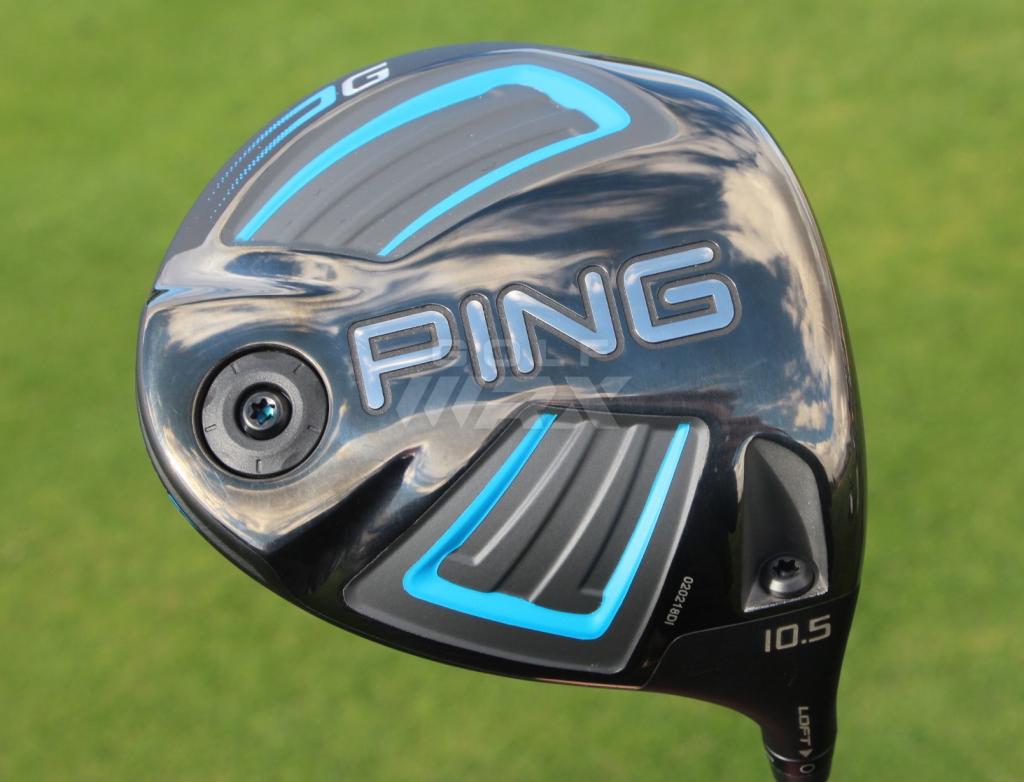
- Wesquire: Ping G is the most forgiving so it wins.
- bopper53: Ping G hands down. Great distance and the most forgiving.
- Dannydubbbs: The Ping G series is just too forgiving. The distance is comparable between most models, but Ping always seems to win out with forgiveness.
- Bruin Bear: The Ping G is going to be overlooked because it’s looked at as “game improvement,” but this driver is a beast. I liked the LS, but it requires a faster swing to get results and in the cold outdoors I just don’t have that all the time. I think the G is the perfect blend of performance and forgiveness.
- cmrl1986: Only reason I switched from the Ping G25 was that the G felt less harsh off the face. Same distance just about.
Further Reading
Cobra King F7+ (3.90 percent)
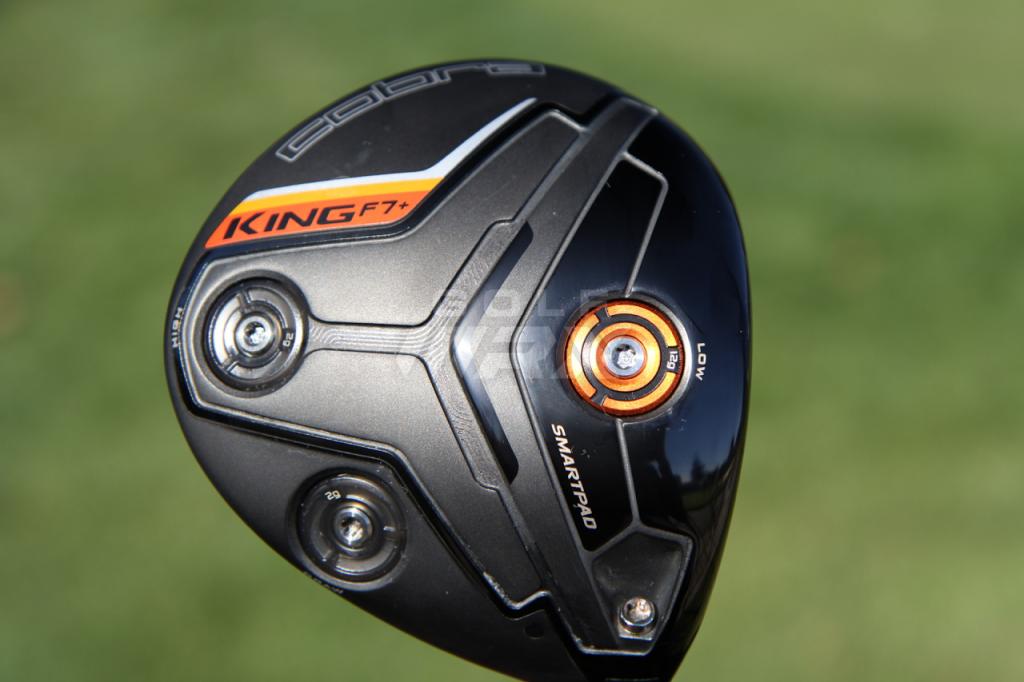
- EntourageLife: Ball really flies off face. Driver head controls spin well. Not one drive “ballooned” and trajectory was high and best of all… very easy to work ball right to left for a confident draw.
- Gollie: The F7+ is another great offering from Cobra… I didn’t get the “MAN, this is gonna take my LTD out of the bag” feeling, but it has very good sound, feel and performance.
- J13: F7+ is a great offering from Cobra and IMO is in the top-3 drivers this year. Epic is the standout for me numbers wise, then M series and F7+ are right behind it. Love the Agera (shaft) in there!!! Such a great shaft; I can’t seem to get mine out of the bag.
- Golfer from MO: Hit both Cobras lefty and as a lefty the LTD is the shizzle. Last year it was the LTD and Big Bertha down to the absolute wire… the F7+ is more workable than the LTD, but not longer and a little worse on mishits.
- Boognish: I took a few swings with the F7+ at Golf Galaxy yesterday. 9.5 degrees with heaviest weight forward. The stock shaft is actually the same model I play in my GBB (albeit in smoked black instead of yellow). Ball flight and distance were similar to my GBB with good consistent sub-3000 backspin. Sound was OK, feel was harder than the GBB.
- thechief16: Just from the range (no LM), I didn’t see a noticeable performance improvement with the F7+ over the original King LTD. And I like the look and sound/feel of the LTD better.
Further Reading
Ping G LS Tec (4.90 percent)
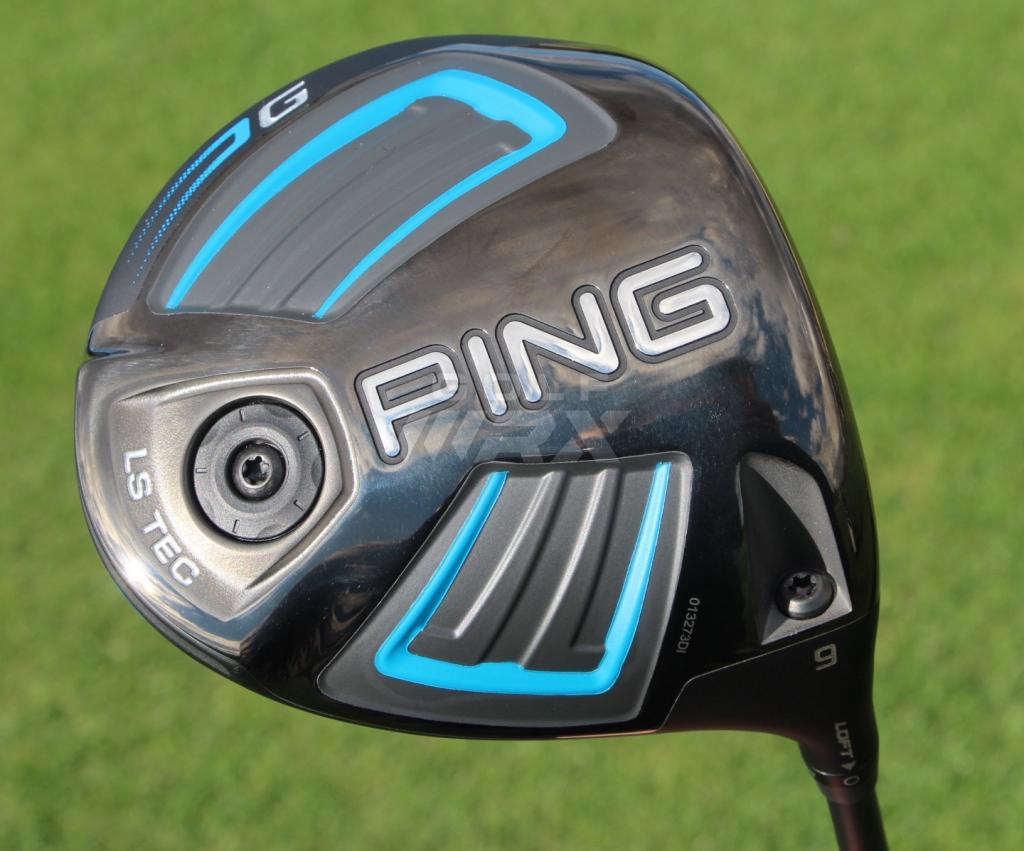
- drvrwdge: I played the G LS with the Ping Tour 65X (shaft) tipped an inch for about a year. Just put the HZRDUS Yellow 75 6.5 tipped an inch and never thought it was possible, but it’s longer and straighter. Best driver shaft combo I’ve ever hit. You can feel that HZRDUS throughout the entire swing. Really gives you a solid connected feel.
- Mtngolfer1: I am not sure that I would consider this a 2017 Driver, but my vote went to the Ping G LS Tec. The fact that my G is still holding its own against the latest 2017 releases has me very excited to see what Ping will release later this year.
- 3woodvt: Fairway finder and plenty long.
- pitchinwedge: I’ve found the LS to be nearly as fade biased as the M family. I get pretty good results with the LS by making a conscious effort to make more of an in-to-out swing. Any lapse in concentration and everything goes right. The M’s require even more effort, which is the reason I stayed with the LS instead.
- 3 Jack Par: After an up and down year with the G LS, I’ve actually recently gone back to my G30 LS head. I only have a couple of rounds as a sample so far, so I can’t really draw a conclusion about whether one or the other is better, but with the same shaft it seems like my G30 head might be a little longer. Honestly, the performance differences are pretty minimal if you really compare the two generations.
Further Reading
Titleist 917D3 (5.30 percent)
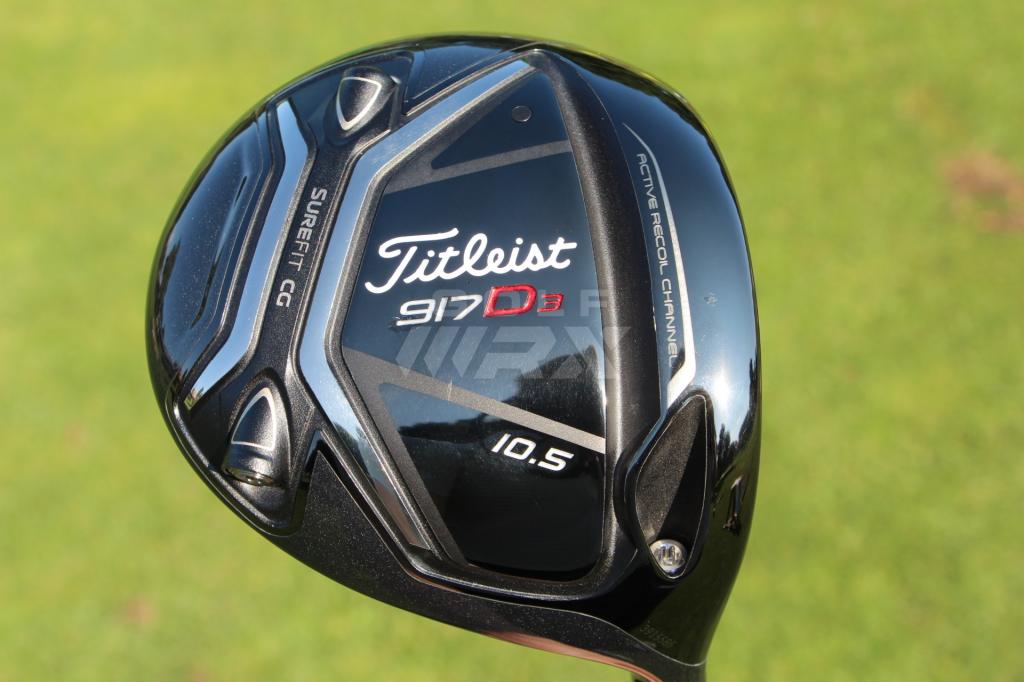
- Gava: The 917D3 is in my bag now, and I’ve found it incredibly long with a recently purchased Graphite Design Tour AD MJ 7TX shaft. Feel and accuracy has been a real improvement as well.
- Togatown22: I find my 917D3 to be just as forgiving as my 915D2 was, and man do I prefer looking down at the head shape and color versus the 915. Very confidence inspiring.
- NIxhex524: I would definitely give the D3 a whirl. I feel like Titleist has made great strides at making the smaller head way more hittable for us ams.
- KPH808: So in conclusion, I was hitting the ball about 9 yards further on average and 3-4 mph faster ball speeds with the 917D3 vs. the 915 D4. The biggest thing for me was the forgiveness between the two; the 917D3 was more forgiving on mishits.
- brushie: The 917D3 head feels soft like the 910 and sounds great. I never had an issue with the 915 sound; it wasn’t great, but it didn’t bother me too much. This is much better, though. The 917D3 head shape is perfect to my eye as well. The area where the 917 shines is forgiveness.
Further Reading
TaylorMade M1 440 (5.35 percent)
- Tigermatt31: The M1 440 is best driver I’ve had ever.
- TollBros: The M1 440 is definitely lower spin than the M1 460 or M2 from last year. Launch angle isn’t really any lower, but spin is lower for sure.
- specimania: This year’s 440 is more forgiving.
- MCoz: Yes, this 440 is more forgiving, and yet it also appears to be more workable than both of the previous M1 and M2s.
- nitram: To save you a bunch of reading and crunching numbers, I quickly concluded there was a little more forgiveness and exactly +0.4 mph ball speed with the 440. By forgiveness I simply mean this: A 1.48 smash 440 will give you the same ball speed and distance as a 1.49/1.50 430. But if you get a 1.50 from both there is no measurable gain. Side-to-side dispersion was better by 4.7 feet with the 440. Workability was a wash between them, although the 430 seems a bit more fade biased whereas I’ll describe the 440 as a scosche more neutral.
- tj24: I hit the M1 440 with my Aldila RIP at an 80-gram X-flex. For me, the spin numbers were around 1700 rpm which is probably to low for my swing. I did, however, like the shape of the head and I felt like I could easily work the ball both ways.
- halfsumo: I really think they nailed it with the shape of this 440 head. Nice pear shape, no weird bulges or ridges that you have to get used to.
Further Reading
- GolfWRX members gain 7 yards on average with 2017 TaylorMade M1, M2 drivers
- 12 Important Changes to the 2017 TaylorMade M1, M2 Drivers
Titleist 917D2 (6.65 percent)
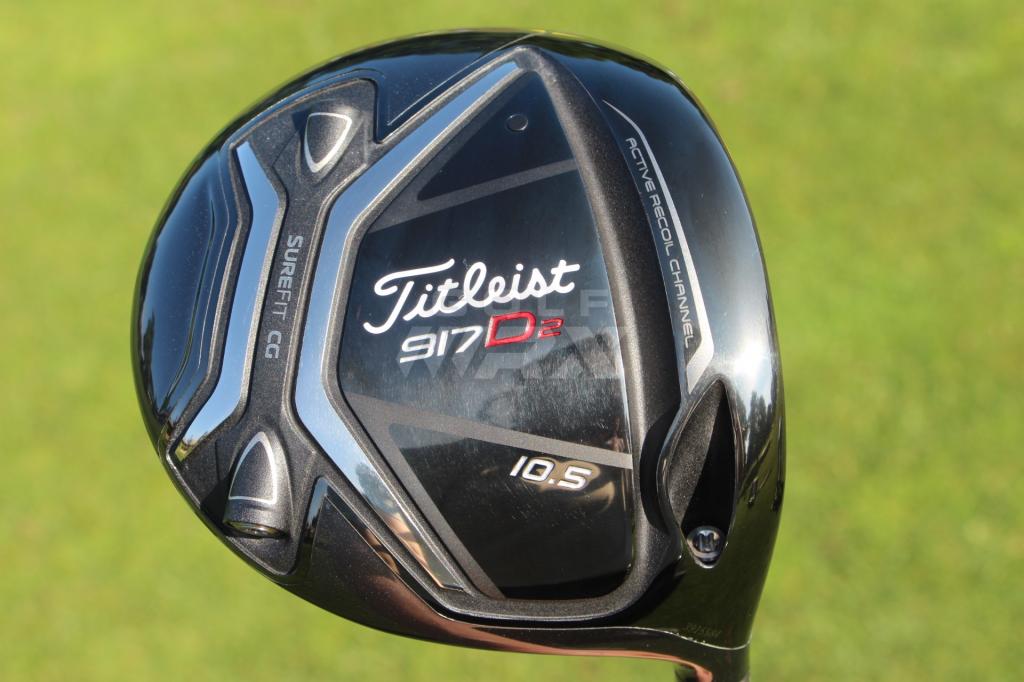
- tsletten: Love the sound of the 917D2.
- bladehunter: No doubt the 917D2 is an accurate, forgiving driver that doesn’t look as big as it is and sounds fantastic.
- JStang: Maybe it’s just me, but I find the face to be more shallow (top to bottom) with the 917D2 than other drivers that I’ve tried lately.
- LuckyLowbrow: I was actually spinning it too low with the D4. Going up to the D2 normalized my spin rate, but led to such an improvement in consistency across the face.
Further Reading
TaylorMade M1 460 2017 (11.81 percent)
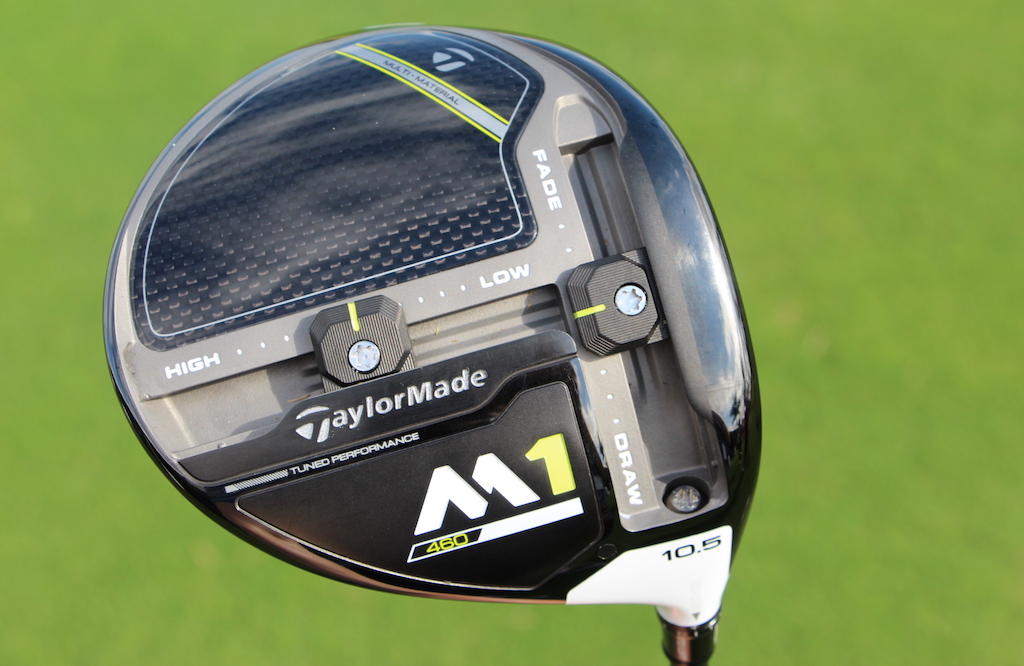
- Ereim: I ended up going with the M1 460. It gave me a slightly tighter dispersion, and I liked looking down at it slightly more.
- jdenham15: The 2017 TaylorMade M1 is a great driver, but I tend to miss wide right and struggled to turn it over.
- ZBigStick: The M1 460 gave me the best results. Was able to increase launch without much added spin with the (T-Track) weight. Feel is good and felt forgiving; dispersion results backing that up.
- BillMurrayGolfing: The face is hot, receptive, thin and makes a nice sound. I like that.
- JStang: Sound and feel were both fantastic. I couldn’t ask for much more in the sound and feel department than what this club offers. Plenty of feedback was provided based on impact as I would expect. I could easily tell where I missed based on feel.
- tnord: Just as another tester found, moving the weight back and forward absolutely does impact how the club sounds. I’m much more a fan of the weight back.
- chickenpotpie: Moving the slider to the draw position made the feel of the driver a little harsher. Feel was much much smoother with that weight in the middle. I didn’t see any such changes with the front/rear slider.
Further Reading
- GolfWRX members gain 7 yards on average with 2017 TaylorMade M1, M2 drivers
- 12 Important Changes to the 2017 TaylorMade M1, M2 Drivers
TaylorMade M2 2017 (11.86 percent)
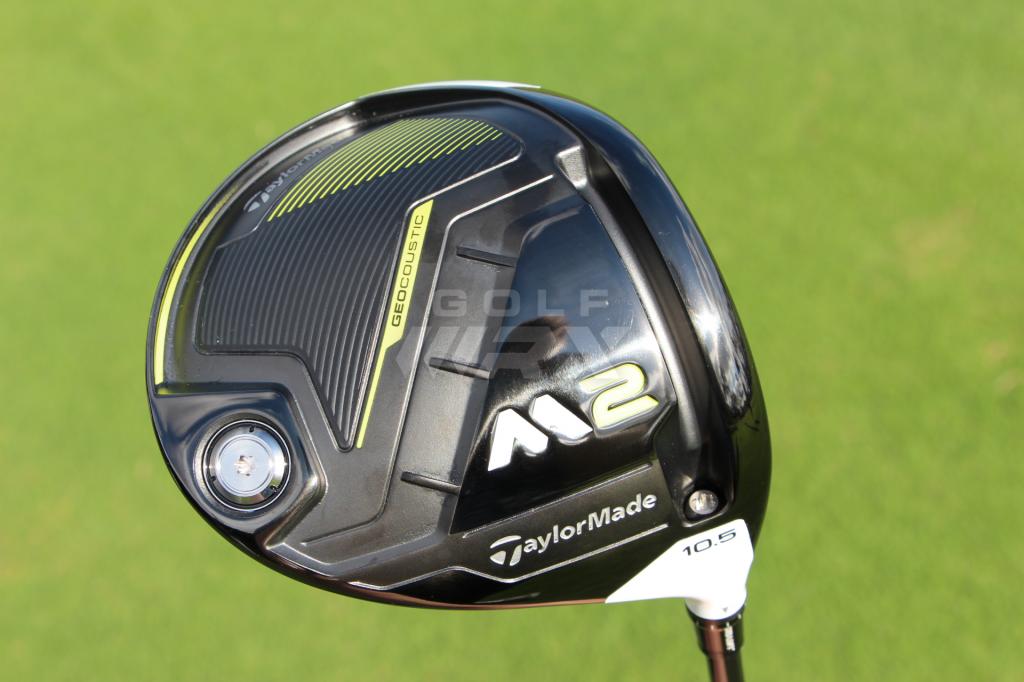
- ZBigStick: I liked the feel of the new M2 but seemed to get better results and numbers with the new M1. Could be the extra 5 grams of head weight?
It was dynamite with the GD TP-6 (shaft)! - erock9174: On Trackman it didn’t put up the most ball speed, but counting all shots the M2 had the longest average distance.
- gripandrip: The M2 seems to have a little bit of a fade bias for me. And the head is HUGE. Maybe it’s a mental thing to be able to turnover a head that large.
- Bomber_11: M2 has very big shoes to fill, as the 2016 M2 was arguably one of the best drivers of the last 3-4 years.
- LONG&STR8: It’s hard to ignore the sound of the new M2. That may be TaylorMade’s biggest fail with that driver, as the sound and feel was one of the best things about the first version that I’ll have in the bag until something better comes along.
- Z1ggy16: The new M2 was terrible for me, not sure why. Unsure if it was the shaft I used but it spun up like a monster and ball speeds weren’t any better than previous M2.
- Peanut191: I don’t really think that the new M2 was much of a step backward, probably more that it doesn’t seem like a big step forward compared to last year’s model. I was hitting my 2016 M2 against a 2017 M2 indoors (which usually amplifies the louder, more obnoxious sound) and I didn’t notice that much of a difference in sound. It could have been that I might have just happened to get a hold of a head that was more muted than normal with the new one, but I just didn’t notice much difference. Performance wise, I could tell that the 2017 was slightly more forgiving than the 2016 model, but I was basically getting the same ball speed and spin numbers, so I didn’t see the need to upgrade.
- gioguy21: Played 54 holes this weekend. The M2 was as reliable as it could get. I hit 11/12 fairways Friday, 10/12 Saturday and 5/9 or so yesterday (windy). Controllable, just wants to go straight. The sound no longer bothers me. I think it’s when hitting indoors or in range bays that it gets unbearably loud. Makes a different sound when hit on the screws I’ve found, similar to last years M2/M1 with less high-pitched ring. The forgiveness is very obvious, as I hit a couple that were close to center of the face but either high or little out toward the toe that flew similar trajectory and distance to how a well struck shot would react. I think where this driver really shines is the ability to either tee it high and hit it with higher trajectory or the ability to hit it lower with a low tee (3/4 of the ball under the crown) and hit laser beams that don’t move left or right.
- G-Bone: From what I’ve seen on Trackman, 2017 M1 was a big jump from 2016; however, 2016 M2 was so good, 2017 is a minor jump.
Further Reading
- GolfWRX members gain 7 yards on average with 2017 TaylorMade M1, M2 drivers
- 12 Important Changes to the 2017 TaylorMade M1, M2 Drivers
Callaway GBB Epic (14.91 percent)
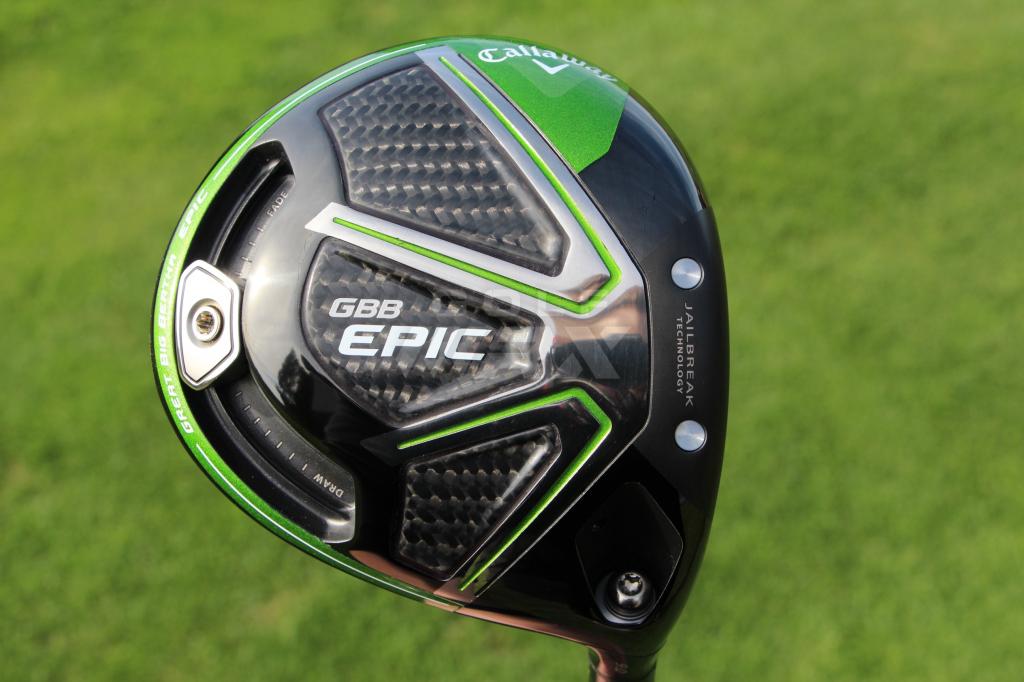
- HDTVMAN: I hit both the Callaway Big Bertha Fusion and Epic with a 44.5-inch UST Recoil F3 shaft and the results were very close. From customer testing, it appears the Epic is longer for those with higher (95+) swing speeds. I have also seen that 44.25-44.5-inch lengths promote tighter dispersion with customers, no loss of distance and better over-all drives.
- mbbrewer: Tried them all and for me Epic was the one. Fastest ball speed, lowest spin and tightest dispersion.
- Ereim: Epic felt great, looked great and the numbers were basically 99.9 percent optimized for my swing.
- johnnylongballz72: There is Epic and there is the M series… then there is everyone else. The votes here show it, the PGA Tour use shows it and launch monitors everywhere show it.
- misplacedtexan83: GBB Epic/Sub Zero pushed the envelop in design and materials to produce increased ball speed and gains. For once a driver did what a company said it would do.
Further Reading
Callaway GBB Epic Sub Zero (16.91 percent)
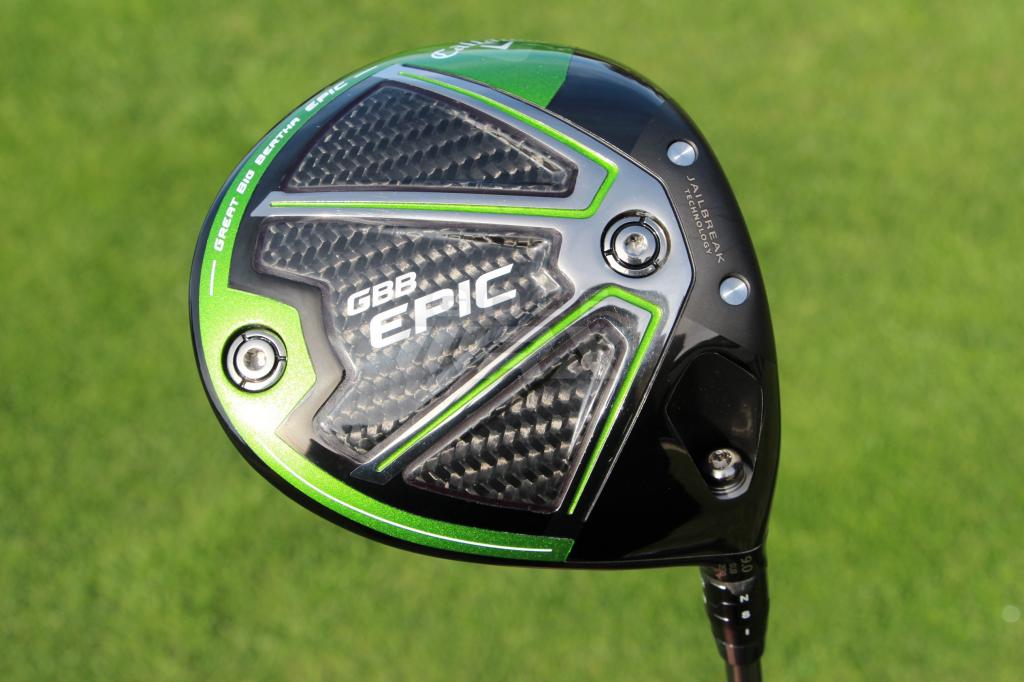
- jdenham15: I tested the Epic Sub Zero and Epic against my 2016 TaylorMade M1 and the ball speed was 5 mph higher on average, which gave me about 10 yards more carry disstance. That was great, but the part that sold me was the forgiveness. I love my Epic Sub Zero. I feel like it’s easier to turn over and I can work it both ways.
- Z1ggy16: Sub Zero was hands down the best, including my gaming M1 (yeah, not even top-3) due to the combination of lower spin, good forgiveness and feel and looks.
- jimhaire: I had a 2016 M2 and went with the Epic Sub Zero. The look at address suited my eye and the feel off the face was better for me. And the club went straight.
- Sef: I have tested a lot of these drivers and for me the Epic Sub Zero was so much better than everything else. I wish I could just apply all three votes to it.
Further Reading
Members Choice 2017
- LIKE652
- LEGIT92
- WOW45
- LOL39
- IDHT16
- FLOP39
- OB34
- SHANK255
-

 19th Hole2 days ago
19th Hole2 days agoJohn Daly stuns fans into silence with brutal opening tee shot on PGA Tour Champions
-

 19th Hole6 days ago
19th Hole6 days ago2-time major champ announces shock retirement from the sport at age of 33
-

 19th Hole7 days ago
19th Hole7 days agoEdoardo Molinari reveals the latest PGA Tour golfer to turn down ‘good offer’ from LIV Golf
-

 19th Hole1 week ago
19th Hole1 week agoScottie Scheffler had an interesting response when asked how he ‘quiets the noise’ following Players victory
-

 19th Hole1 week ago
19th Hole1 week agoJon Rahm dealt fresh blow to hopes of qualifying for 2025 Ryder Cup
-

 Equipment2 weeks ago
Equipment2 weeks agoBest driver 2024: The best driver for you, as recommend by expert club fitters
-

 19th Hole2 days ago
19th Hole2 days agoCharlie Woods finds it tough going on American Junior Golf Association debut
-

 19th Hole5 days ago
19th Hole5 days agoWhy Kevin Streelman sought USGA approval to use this equipment tool as he leads Valspar after round one

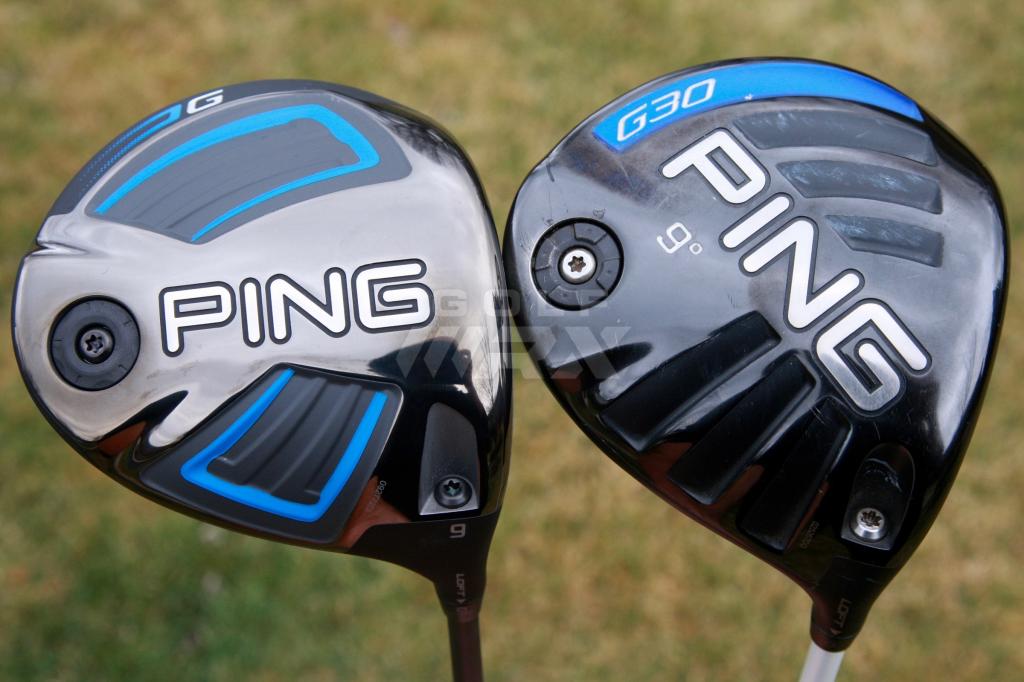


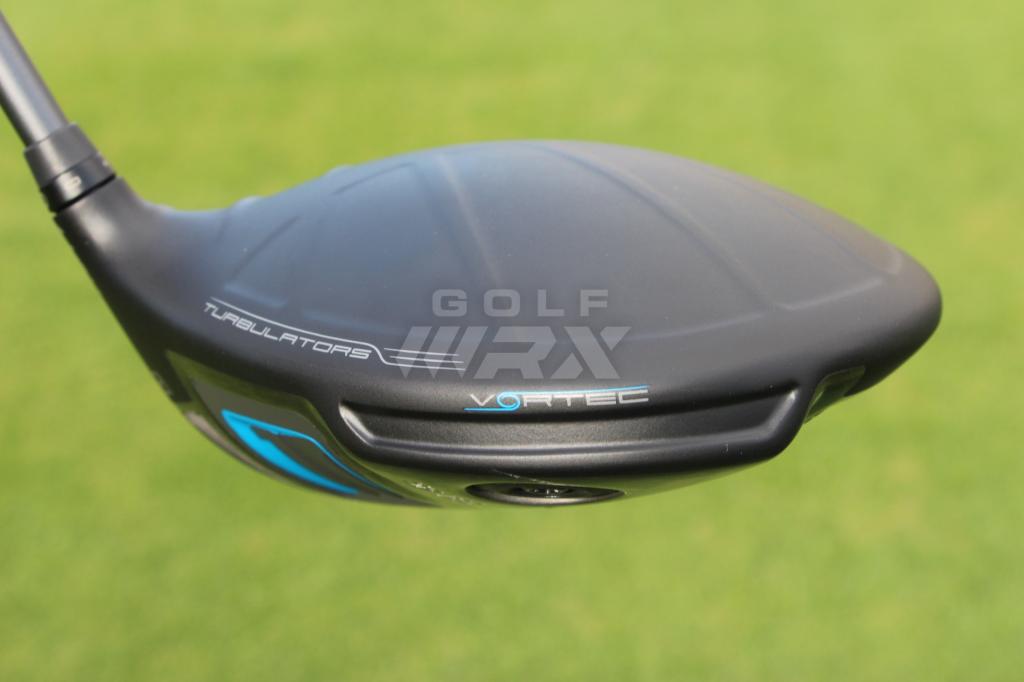
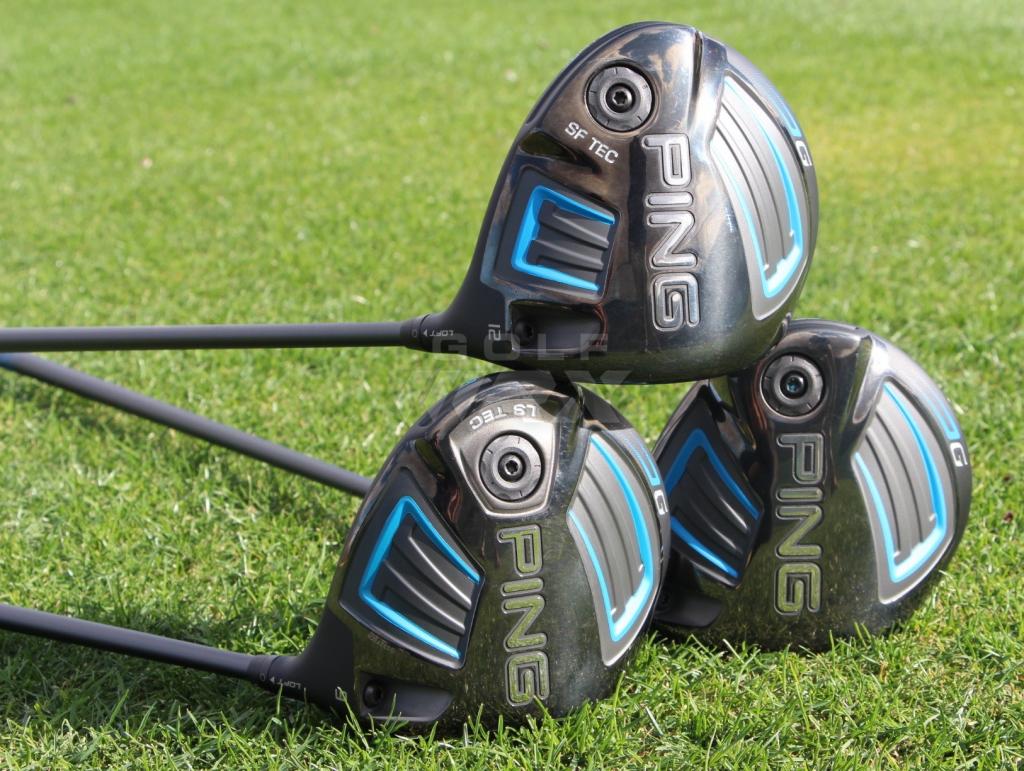
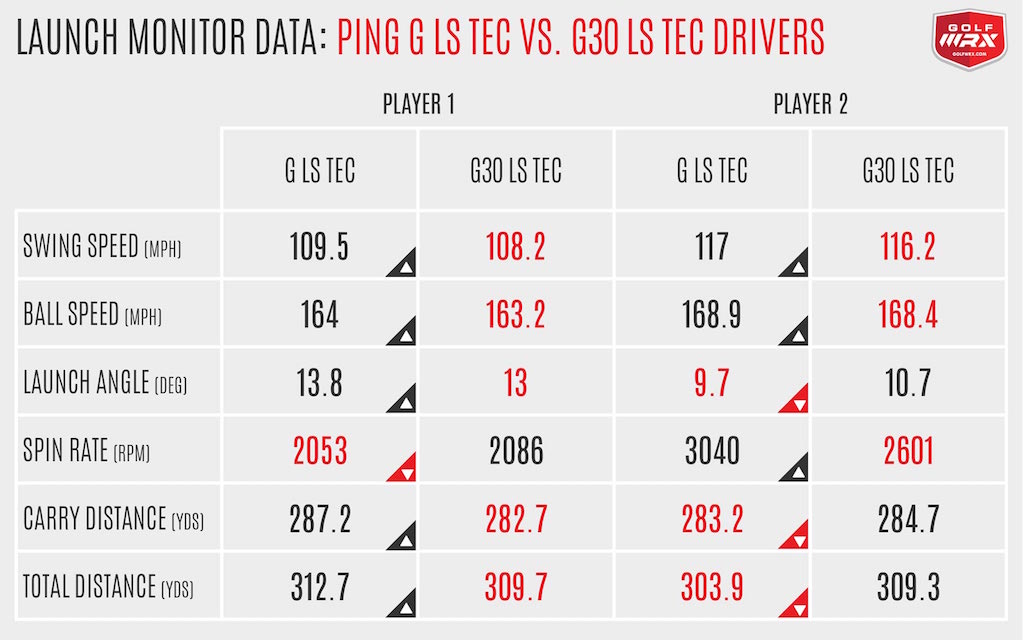
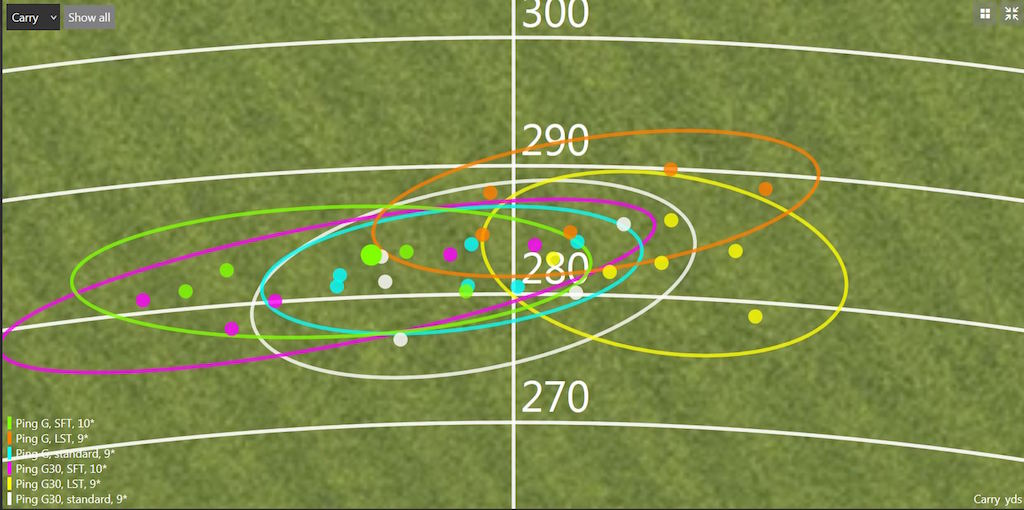
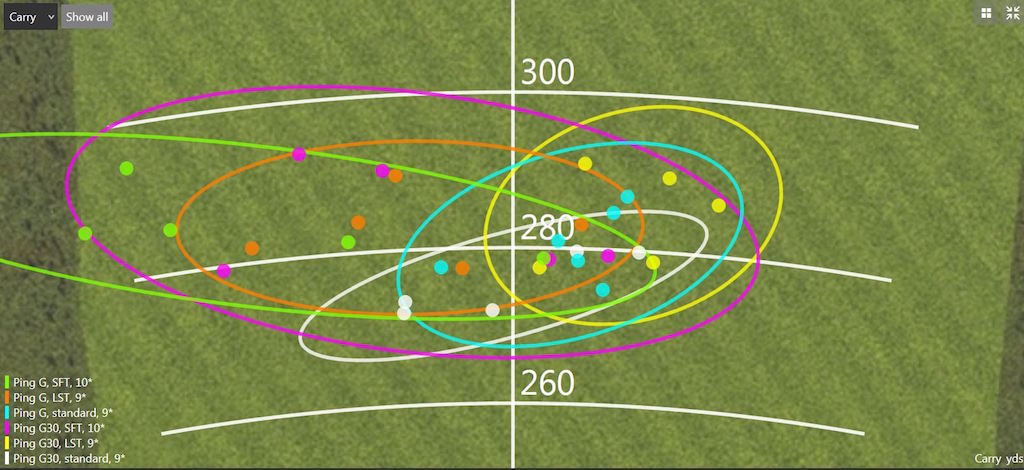





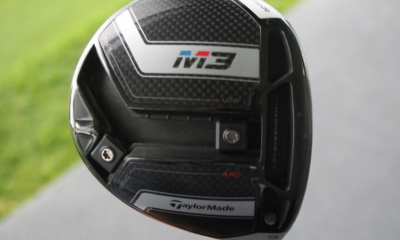

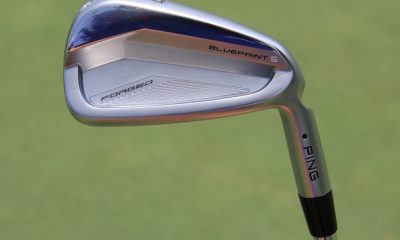





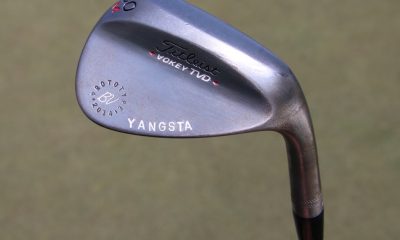

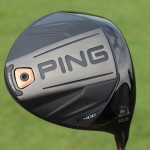
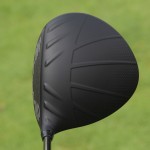
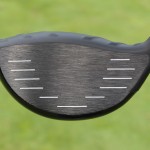
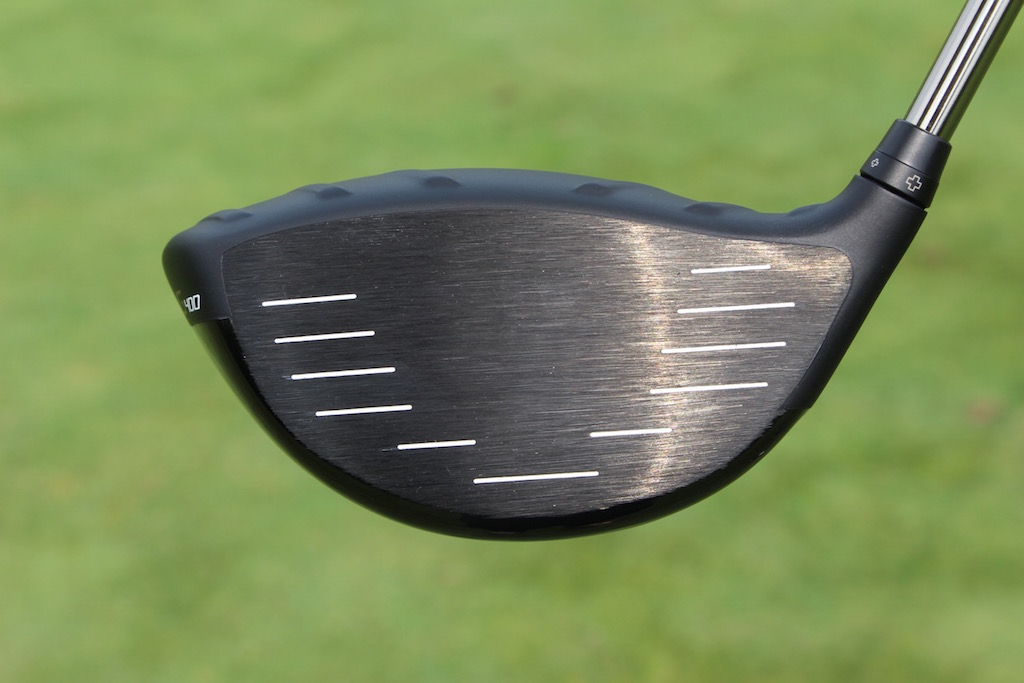
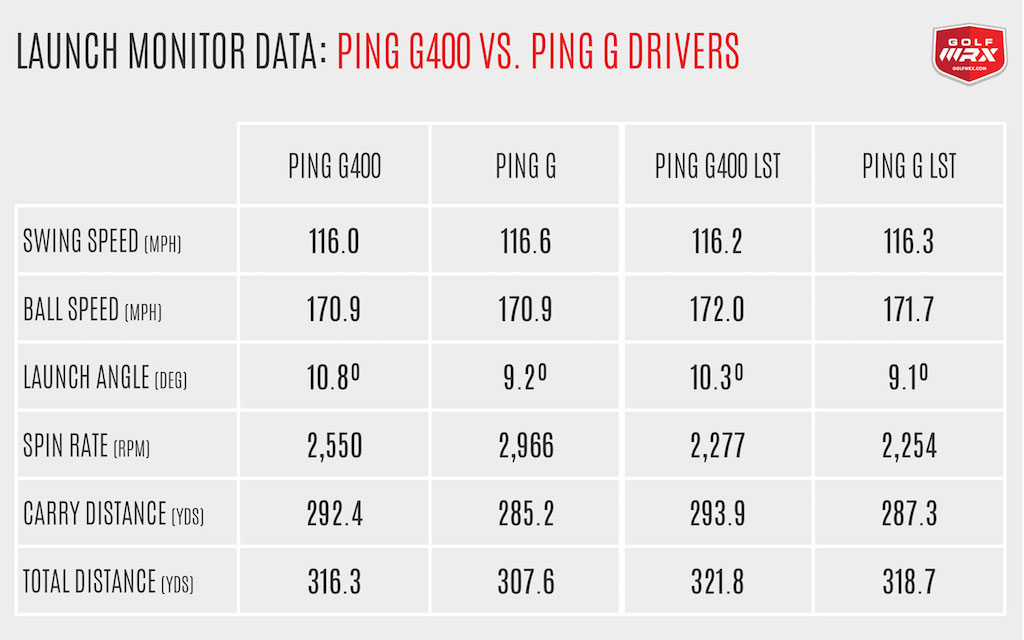
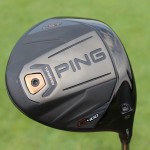
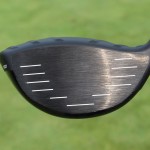
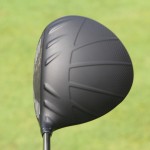
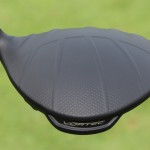
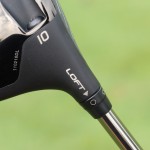
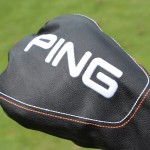
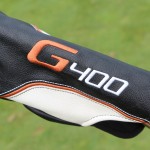
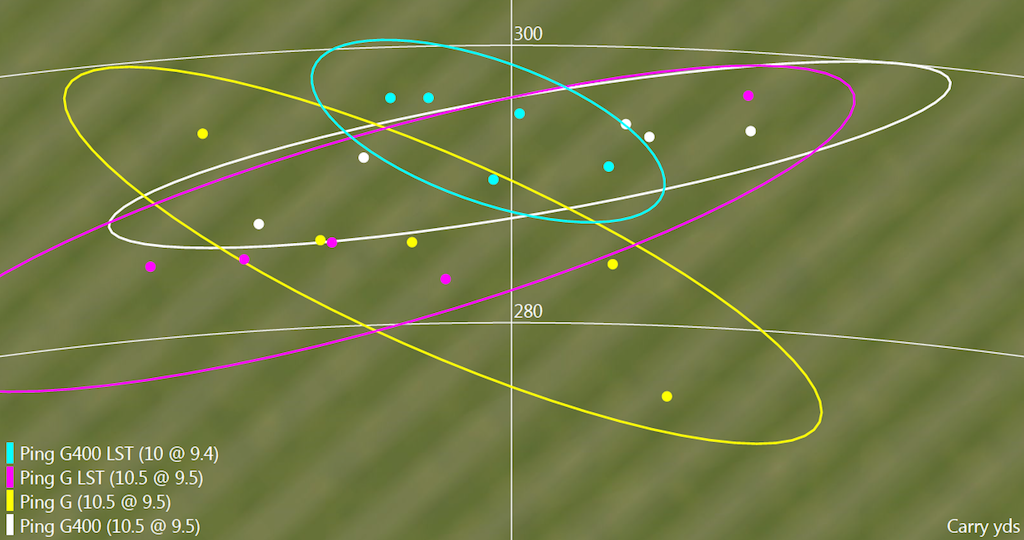
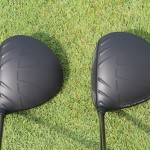
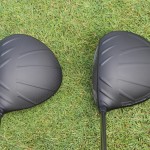
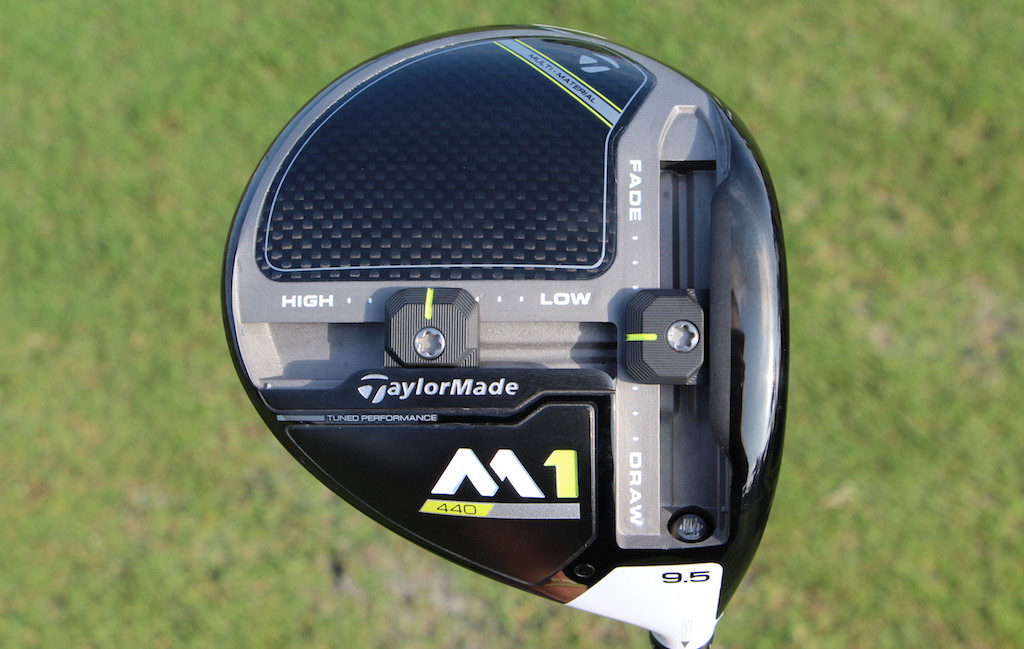










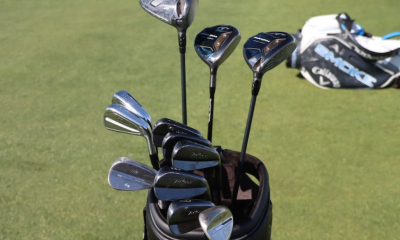

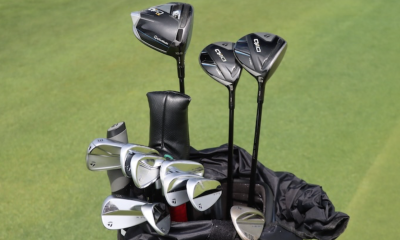

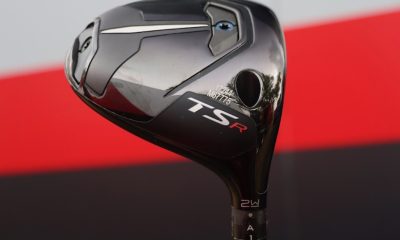

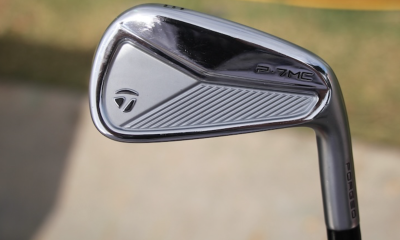

Andy
Jun 28, 2017 at 6:17 pm
Been trying the G Ls tec, I find it very harsh when hit,fade biast but it beats my i20 by 15-20 yards into wind,not a lot of difference down,yes tour shaft set at 8 degree,wish I could get it to draw slightly!!!
Pingback: Let the big dog eat – theloopweekly
Lambo428
Feb 7, 2016 at 10:48 pm
At my golf store, I hit the G LS Tec and the SF Tech (LM) with the Alta and Tour 65 shaft and the ball explodes off the face. Strangely, the driver felt and worked for me better then the G30 by far. I hit other drivers of the same launch monitor and I was registering 80 mph but with these drivers I was registering 85 mph. Also, the G driver feels light and therefore fast. When this driver is released, I’ll consider it but my 2014 Big Bertha has the sliding weight in the back which helps me enormously.
Jeffcb
Jan 23, 2016 at 12:43 pm
Do agree with certain commenters that they could use a 95-100 mph swinger with a 6 index in their test like myself and many others. Someone with a fairly repeatable swing that you could extrapolate meaningful data from, not a 20 index even though that does make up the majority of golfers.
* Looks like Ping could have sent their r&d guys on vacation for a year and saved some cash although the G does look cool.
Mikec
Jan 23, 2016 at 8:46 am
STOP STOP STOP AS PRIOR POST STATED, USING ALL HIGH SWING SPEED TESTERS PLEASE!!! MANY OF US ON THIS SITE, IN FACT THE MAJORITY OF MALE AMATEUR GOLFERS SWING AT 90-100MPH. USING A GOLFER AT 107 AND ONE AT 115 IS STUPID AND USELESS UNLESS YOU PUT ONE IN AT 100!!!! MATTER OF FACT, YOU SHOULD ALSO HAVE A 90MPH GOLFER, BUT IF YOU ONLY HAVE 2, THEN USE THE 90-100 AND 100-110 GOLFER.
Eric
Jan 23, 2016 at 11:32 am
It doesn’t matter dude. Why would you want sh*** players doing testing?
Gary Gutful
Jan 27, 2016 at 2:01 am
Exactly. How reliable is some chimp who duffs every third shot going to be? These numbers should only be used as a guide. Nothing is going to beat doing your own testing.
Ryan
Jan 28, 2016 at 9:27 am
My SS tops out at 101. Current index: 0.0. State Am qualifier, All-Navy team, etc. etc. etc. Assuming that every player with a 100mph SS is “sh****” is probably not a good idea. Personally I agree with Mikec, for the sole reason that the vast majority of players (like over 90%) fall in that 90-105 range. I’d like so see that range represented.
drgprov
Apr 25, 2016 at 7:37 am
I have to agree with Mikec, there are great golfers out there with slower golf swings. I’ve competed with a lot of high SS golfers and won most of those matches. Yes agree I am not going to play from the tips of a 7200 yard course with a slop of 148 but who really cares. I will hit mine down the middle with a 245 to 255 yard drive, and my opponents can swing hard just incase the catch one, but you will be out scored on the putting surface. so here is to the 90 to 100 SS players.
Clay
Jan 14, 2016 at 10:27 pm
The sound was the main reason I didn’t play G30, that and my 815 DBD was awesome. Unfortunately it broke and Callaway sent me an 816 which I don’t like as well. So being that I am in the market for a new driver, I really hope this one sounds better.
Eric
Jan 23, 2016 at 8:28 pm
It will. It’s supposedly more muted.
gvogel
Jan 12, 2016 at 9:50 pm
I have a G25 which I will not part with. I had a couple of G30’s which I got rid of.
They are all fine drivers – for me it just matters which shaft works the best. We’ll see if the stock shaft in the G driver measures up.
Big Ferk
Jan 12, 2016 at 1:20 pm
Love my G30…. Looking forward to trying G but love the fact now I can buy a spare to myG30 at a reduced rate …. If mine breaks or gets lost , I’m covered
emb
Jan 12, 2016 at 1:04 pm
I’ve hit this in person side by side with G30, only meaningful difference I found was the G sounds much, much better (muted, solid) than the G30, which sounded like an aluminum baseball bat.
mo
Jan 12, 2016 at 1:51 am
Oh the joy of buying a new driver and being shorter with it.
Eric
Jan 12, 2016 at 6:43 am
Are people still dumb enough to think that they’ll get more distance with a new driver?
Carlos Danger
Jan 13, 2016 at 10:44 am
why do you think we are visiting the RX site? we all think that
Cris
Jan 12, 2016 at 12:13 am
Not sure how the Ping G Series gets a 5 star review. For the 2nd player, it clearly underperformed the previous offering. And yes, at the end of the day, carry distance, total distance and dispersion are what really matter. We conveniently discount those because it doesn’t fit our story.
Yazactly
Jan 12, 2016 at 2:59 am
I guess WRX gets given a bunch of free ones
Milo
Jan 11, 2016 at 10:23 pm
I need the pink Bubba version in LS tec please.
farmer
Jan 11, 2016 at 9:36 pm
Add me to the number who would like to see an average SS in the test. This is meaningless to me.
Yazactly
Jan 12, 2016 at 3:00 am
Ya, Exactly. Lets see some dudes hit the SF Tec against the old version and see what happens. After all, that’s 95% of the market who will buy this thing
snowman
Jan 12, 2016 at 8:22 pm
didn’t you know…average swing speed of Wrxer’s is 125 MPH. At
Steve
Jan 18, 2016 at 12:56 pm
Exactly. Most golfers swing in the 90-100 MPH range. So get some guys swinging there and i’ll be you see almost NO difference form the G20 thru the G.
kn
Jan 11, 2016 at 5:51 pm
Aesthetically, it looks like something Batman would whip out of his Bat-Belt. Whether it’s the Turbulators, the flat black top, or the Vortec extension on the back, this head feels like a throwback to the days when swinging a toaster-sized golf head was stylish, but not in a good way. Is it bigger? It sure looks bigger, and I’m positive that’s not the impression I want when I’m swinging. I’m also sure it’s very forgiving. Having currently employed a couple of Ping’s hybrids in my bag, I’m confident I can hit the fairway. For me, it’s a psychological thing. Bigger (or, more specifically, longer in shape) isn’t necessarily better.
Yazactly
Jan 12, 2016 at 3:01 am
I don’t think even Batman would play it. May be Batgirl. She needs help with her game
Eric
Jan 12, 2016 at 6:45 am
Ok mark crossfield.
DaveyD
Jan 11, 2016 at 3:49 pm
In the posted numbers, I don’t see anything to make me want to switch to the G’s. I’ll just work on hitting my existing driver better this year than last year.
Jeff
Jan 11, 2016 at 3:02 pm
Broke my shaft on the G25 and went back to my Callaway Ft9 with Fubuki 63g tour shaft
Hit is as far as the G25 but will reshaft with a different brand maybe Adilla phenom.What I am saying is if you don’t need to change don’t.I had some extra cash and purchased the G25 and more than happy with it.
Jim
Jan 30, 2016 at 5:49 pm
Send the g25 driver to ping they will reshaft for you for only shipping costs go to your local ping dealer and they take care of it for you take like 10 days at most
Jim
Jan 11, 2016 at 2:42 pm
When is Golf WRX going to use some realistic testers for these clubs. We hear all the time that the average golfers clubhead speed is 85 mph. Yet WRX continues to test and make recommendations based on testers with clubhead speeds exceeding 105+ mph.
For once, it would be nice to know what these clubs will do for the average golfer!
Large chris
Jan 12, 2016 at 6:30 am
It’s even worse when they use these guys for iron testing – last test they did the launch angles were so low (8 degrees with a 4 iron I think, PGA tour average would be 15 or so) as to be doubly meaningless.
Shortgame85
Jan 21, 2016 at 9:16 am
I couldn’t agree more. I love WRX, but the review section becomes less relevant for me when their only testers are relatively young, high swing speed fellows. That bears little resemblance to my 58 year old body swinging at 88 to 90 MPH. Come on WRX, why don’t you have a few fellows above 50 years of age with a more average swing speed test drivers, fairway woods and irons? I’ll bet if you do, those reviews will be a lot more meaningful to many of your loyal readers. I have a G25 driver. I love it. It is very forgiving and as long or longer than any driver I’ve had. It would be so helpful to see the numbers of a more moderate swing speed tester in a comparison between the new G and any older model Ping driver.
David W
Jan 11, 2016 at 1:39 pm
Have a G15, and had a G20 (traded for G30). 15 was better than the 20 for my swing but the 30 blows them both out of the water. Hated the 25 when I tried it at the range. I won’t be upgrading to the G from my wonderful G30.
allen
Jan 11, 2016 at 1:00 pm
So the new club is really no better than the G30. The best thing to get is a G25, they are cheap right now and really good.
Poppa
Jan 11, 2016 at 12:51 pm
I would buy a G30 for 299.99 instead
John
Jan 11, 2016 at 11:35 am
Looks really cool, but i probably won’t upgrade from my G30.
DatSliceDoe
Jan 11, 2016 at 11:34 am
Numbers wise I see no improvement. Oh, and get a 15 hdcp “real person” to test these, not two nearly identical low cap golfers.
Eric
Jan 11, 2016 at 11:25 am
How about a tour option without all the b.s. on the top and muted sound and a smaller head. It’s amazing, every year I find myself searching for equipment from past years not because I want to save money but because they keep crapping up the clubs with stuff on the crown.
Other Paul
Jan 11, 2016 at 10:37 am
If i was rich i would say “I guess we will just have to wait and see what the other Ping engineers can come up with at PXG”. But I am not rich, or at least i prefer to spend my money on golfing.
$400 on lessons will make me hit my old driver better then $400 spent on a new toy that is 1% – 6% more forgiving. I have more then 1.43 MPH variance from swing to swing as well. So instead of buying a faster club i can just swing faster.
Dj
Jan 11, 2016 at 10:12 am
Shape is better, but still not good
The Truth
Jan 11, 2016 at 8:53 am
I hated the sound of the G30, stuck with my trusty G20. I hope this one is better sound wise.
Bert
Apr 12, 2016 at 8:57 pm
Sounds like a trash can being hit with bat! Sort of like the old King Cobra. Found G30 far superior in sound and play-ability and quickly returned the G to the retailer. I tried three shafts and one preformed OK, but nothing to justify a new driver. As mentioned found the G30 far superior.